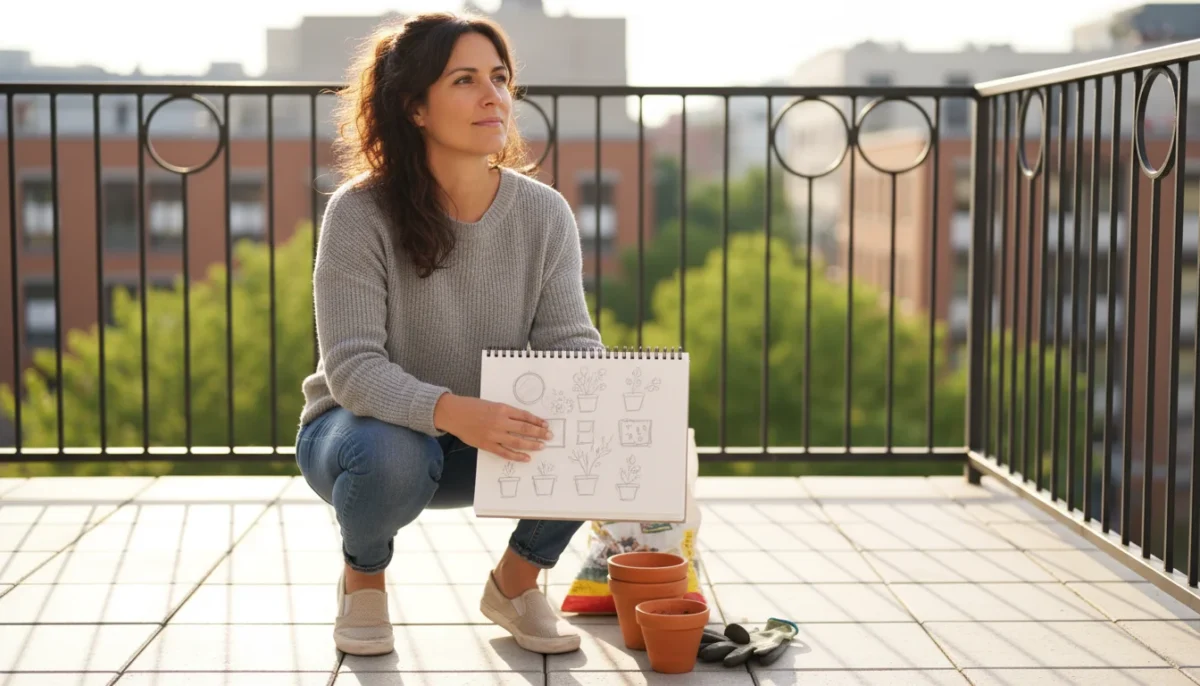Designing a beautiful garden, especially in a small space, does not require a large budget. You can create an outdoor sanctuary that looks luxurious and feels inviting without spending a fortune. This guide provides practical strategies and actionable advice to help you achieve a stunning garden makeover that is both affordable and sustainable.
Disclaimer: This article is for informational purposes only and is not a substitute for professional advice. Consult local extension services for region-specific recommendations.
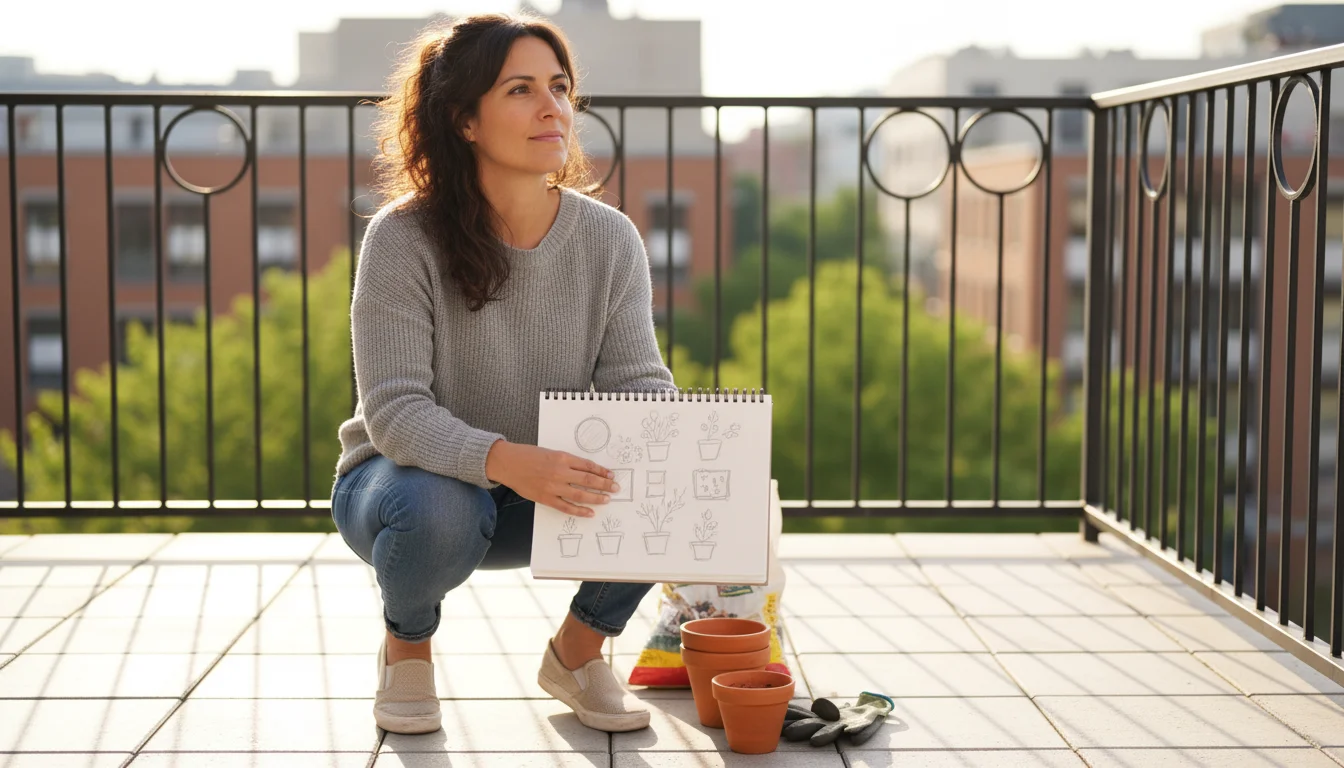
Plan with Purpose: The Foundation of Budget Garden Design
Every successful budget garden design begins with a clear plan. Spontaneous purchases often lead to mismatched items and wasted money. Before you buy anything, assess your space, understand its limitations, and define your vision. This strategic approach ensures your affordable garden makeover looks cohesive and thoughtful.
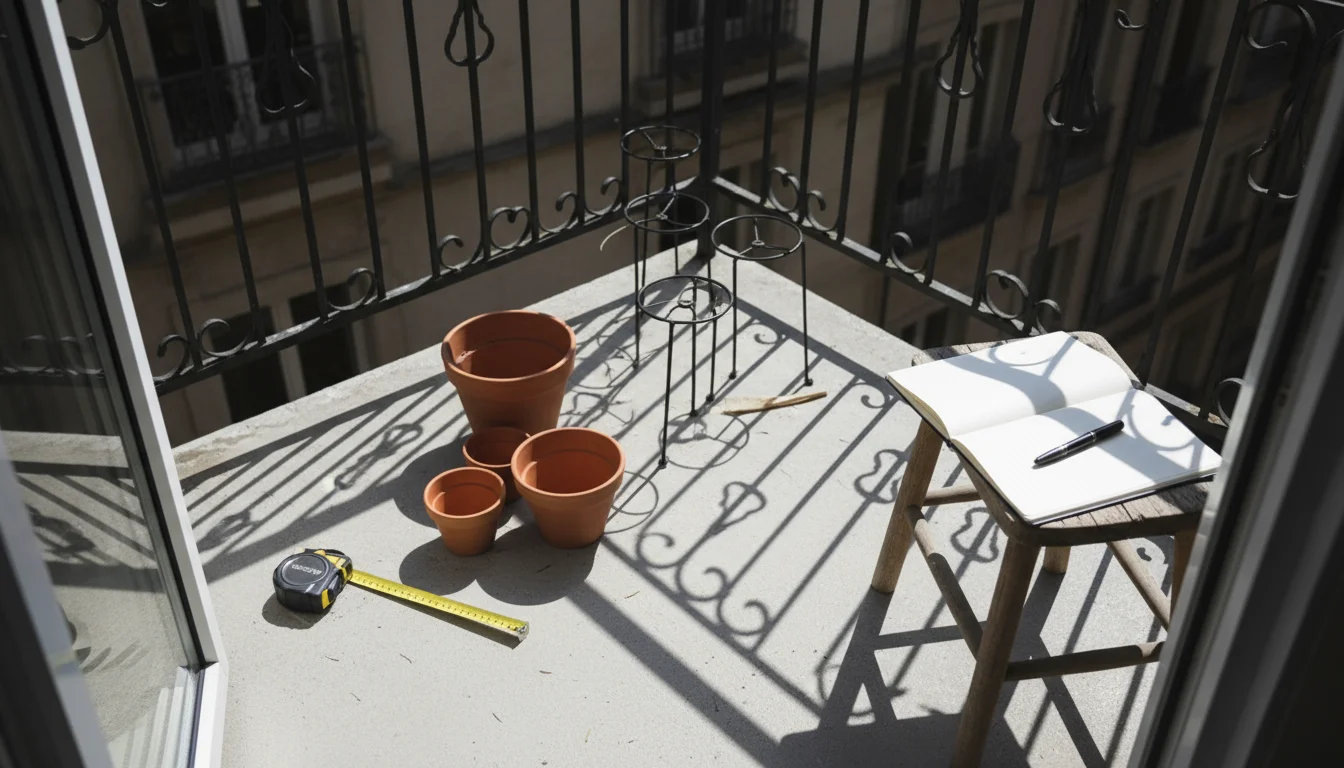
Assess Your Space
Start by observing your balcony, patio, courtyard, or compact yard throughout the day. Note how sunlight moves across the area, identifying sunny and shady spots. Understand prevailing winds and any existing features you want to keep or hide. Measure your space accurately. Knowing your dimensions helps you choose appropriately sized elements and prevents overcrowding.
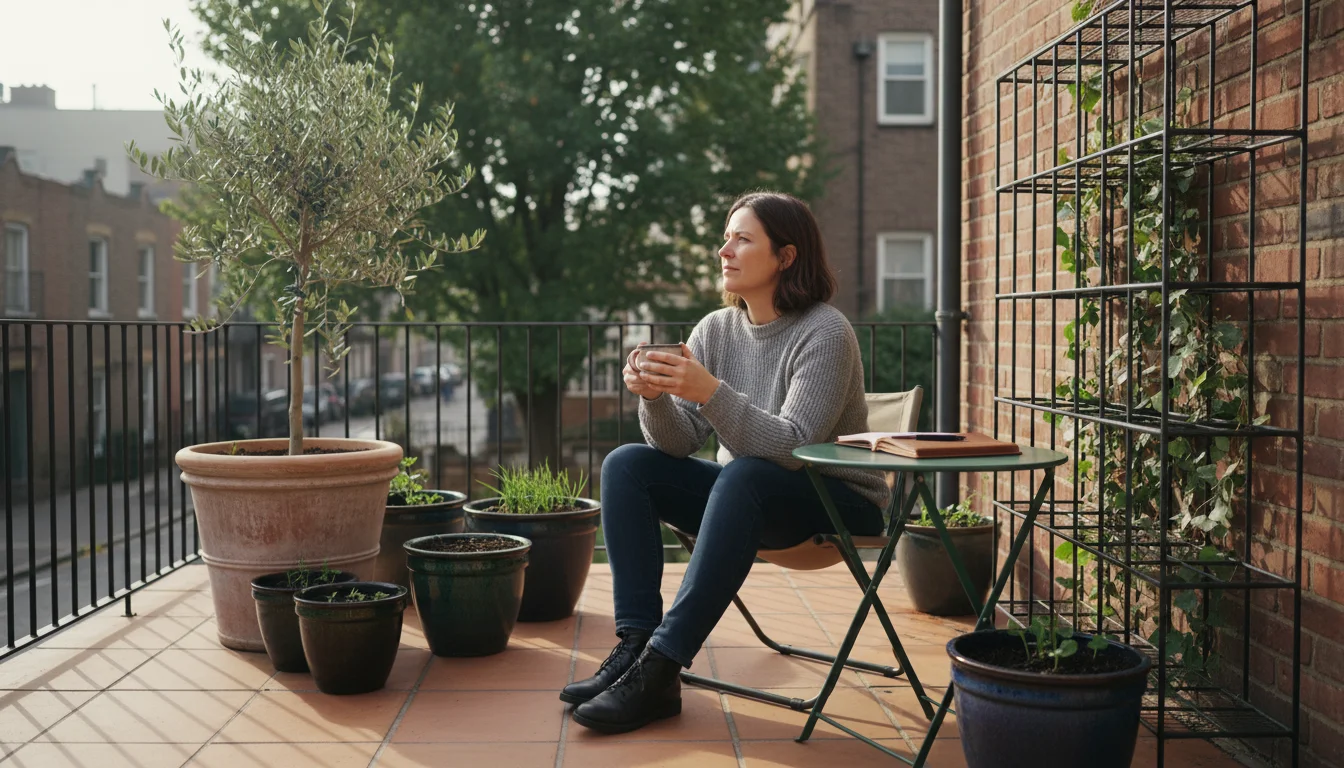
Define Your Needs and Wants
Consider how you will use your outdoor area. Do you need a cozy reading nook, an entertaining zone, or a productive edible garden? Perhaps you want a blend of all three. Listing your priorities helps you allocate your budget effectively. For instance, if entertaining is key, comfortable seating and practical surfaces take precedence over elaborate plant collections.
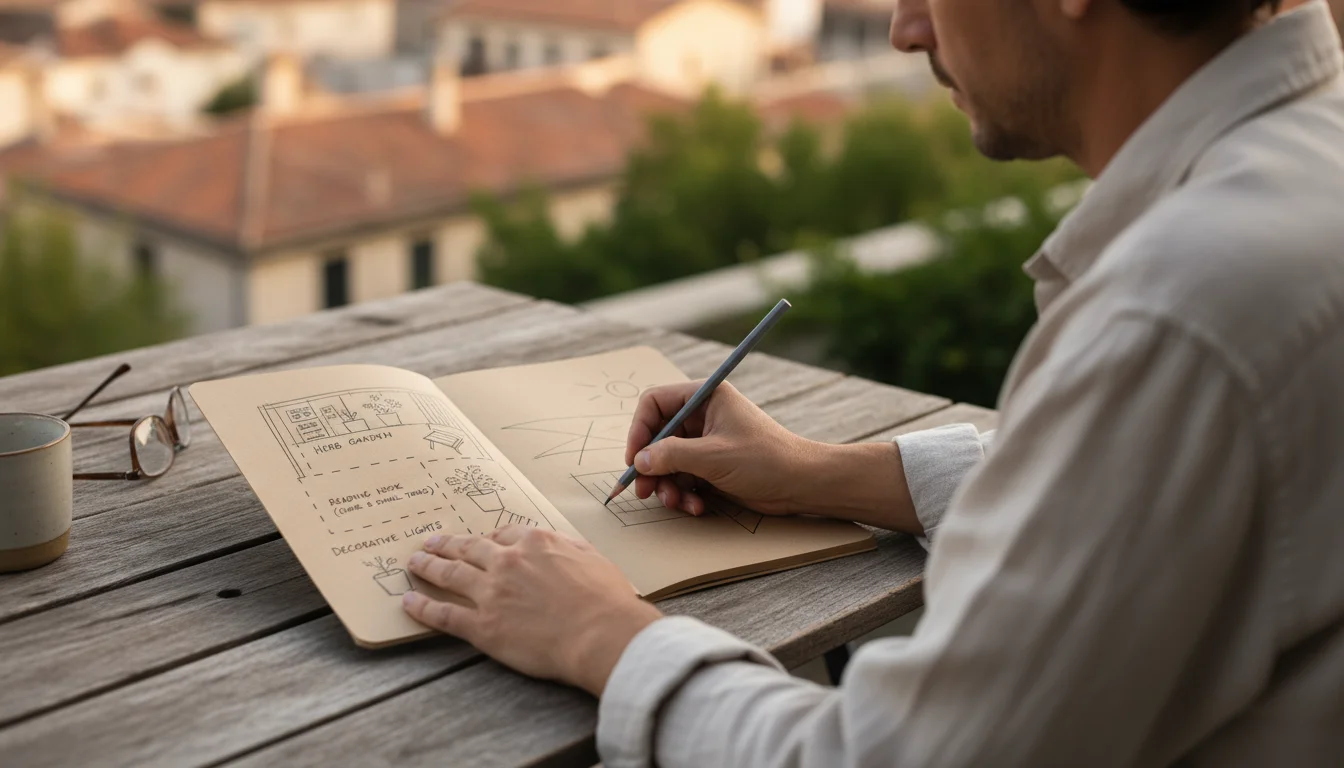
Sketch Your Layout
A simple sketch on paper transforms your vision into a practical guide. Draw the outline of your space. Mark existing permanent features like doors, windows, or railings. Experiment with different arrangements for seating, containers, and pathways. This step, sometimes called “zoning,” helps you designate areas for different activities. For example, you might create a dining zone, a quiet corner, and a planting area. Aim for clear traffic flow, ensuring pathways are wide enough for comfortable movement, generally at least 24-30 inches for a single person. Consider the view from indoors too; make sure your garden presents an appealing picture when seen from inside your home.
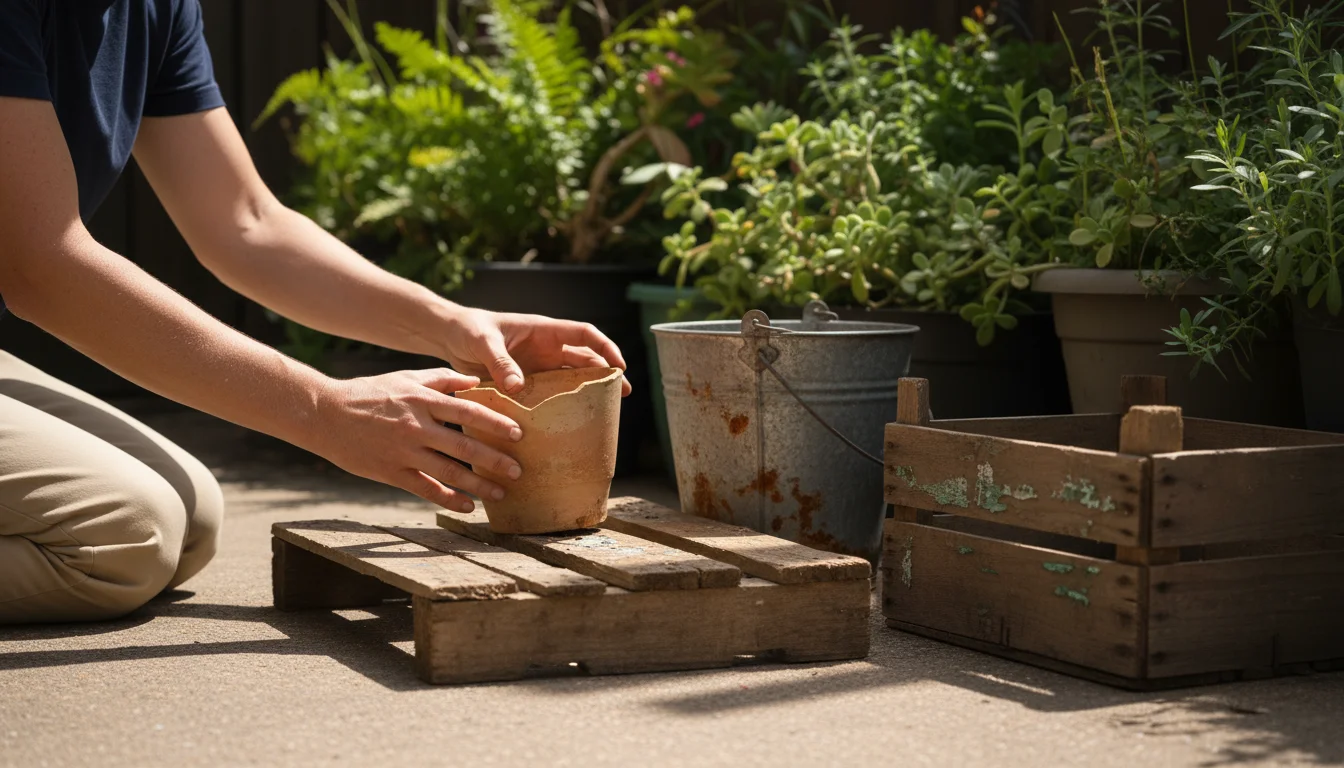
Shop Your Home and Salvage Yard First
Before buying new items, look for hidden treasures around your home. Old ladders can become vertical planters. Discarded wooden crates transform into rustic shelves or container stands. Seek out affordable garden makeover supplies at thrift stores, yard sales, or even construction salvage yards. You often find unique, character-filled pieces for a fraction of the cost of new items. For example, an old metal bucket, cleaned and drilled with drainage holes, makes a charming planter. Wooden pallets, often available for free, offer versatile material for DIY projects like privacy screens or vertical gardens.
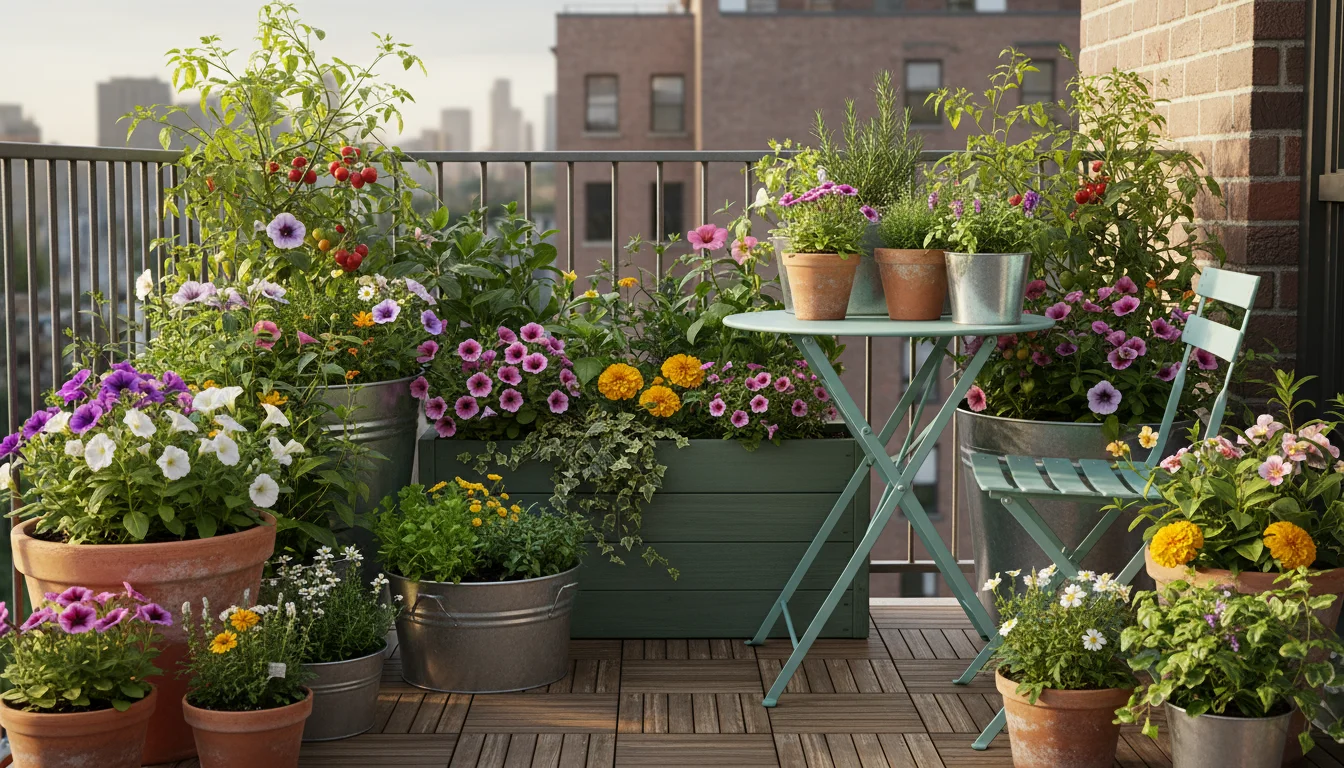
Clever Container Strategy for Affordable Elegance
Containers are the backbone of small-space gardening. A thoughtful container strategy makes a significant impact on your budget garden design, creating a polished look without expensive pots. Focus on cohesion and smart grouping.
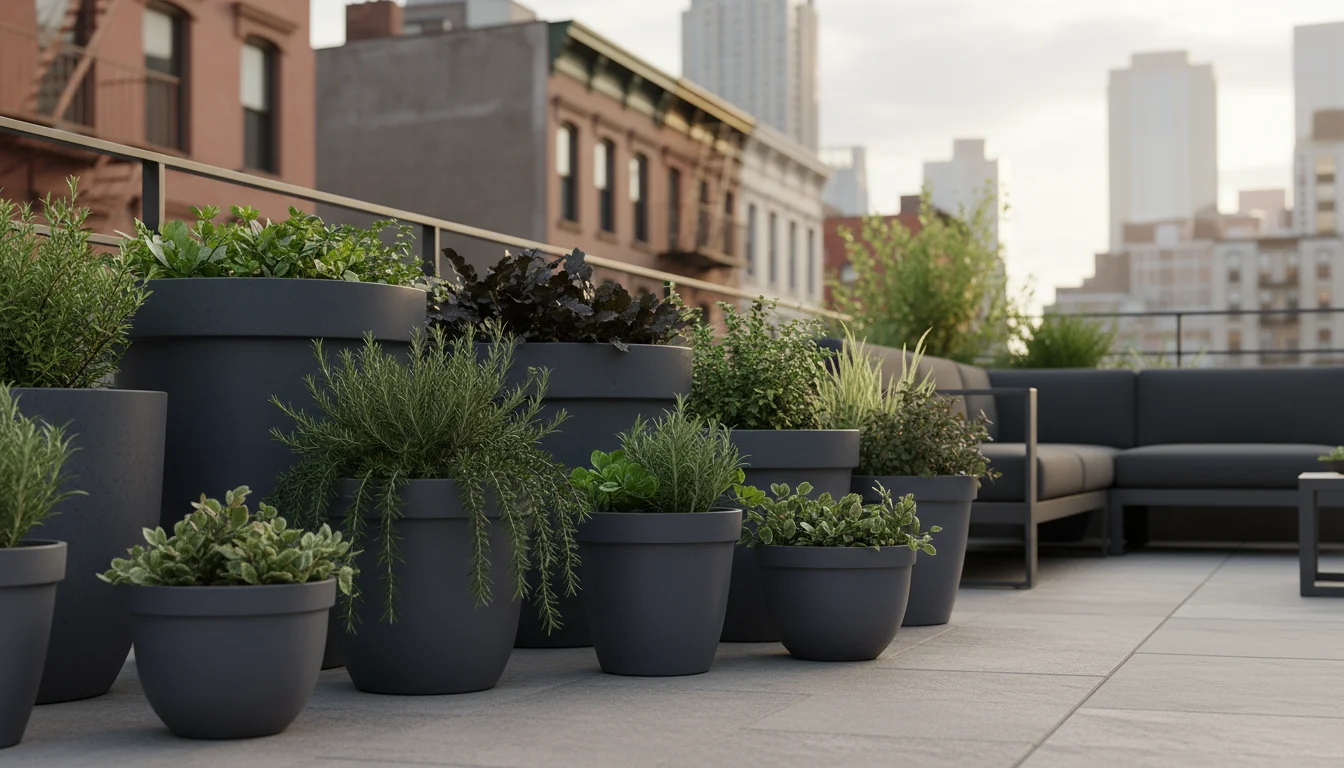
Choose Cohesive Materials and Colors
You do not need matching pots, but aim for a cohesive look. Select a limited palette of materials or colors for your containers. For example, use terracotta pots of varying sizes, or choose plastic pots in a single neutral shade like charcoal or cream. This creates a unified appearance, making your collection look intentional and well-designed rather than haphazard. A mix of textures, such as smooth ceramic and rough concrete, adds interest as long as the color scheme remains consistent.
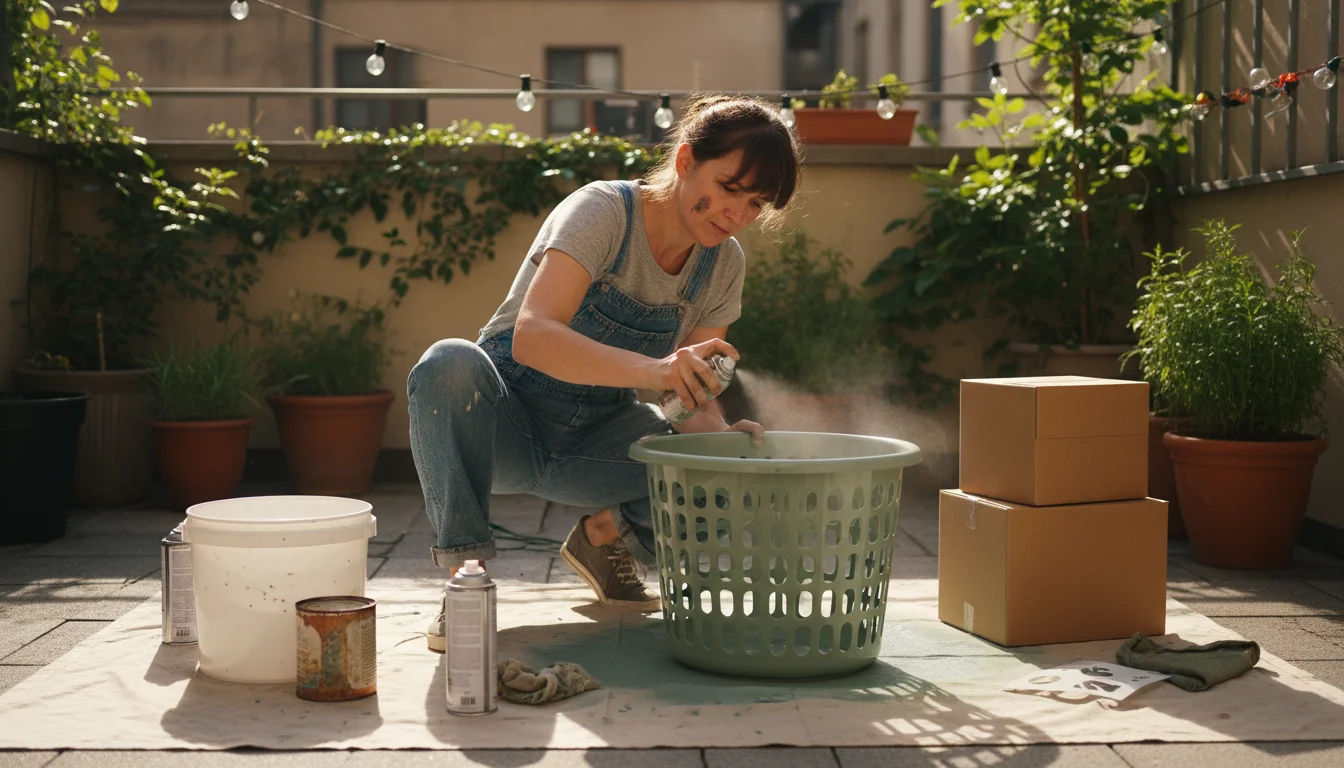
Thrift and Upcycle Containers
High-end containers cost a lot. Instead, hunt for pots at thrift stores, yard sales, or community plant swaps. Paint old plastic pots with spray paint designed for outdoor use to give them a fresh, uniform appearance. You can transform buckets, old tires, or even large food-grade containers into stylish planters. Always ensure containers have drainage holes. If a container lacks them, drill a few holes in the bottom to prevent root rot. This simple step protects your plants and extends the life of your budget-friendly vessels.
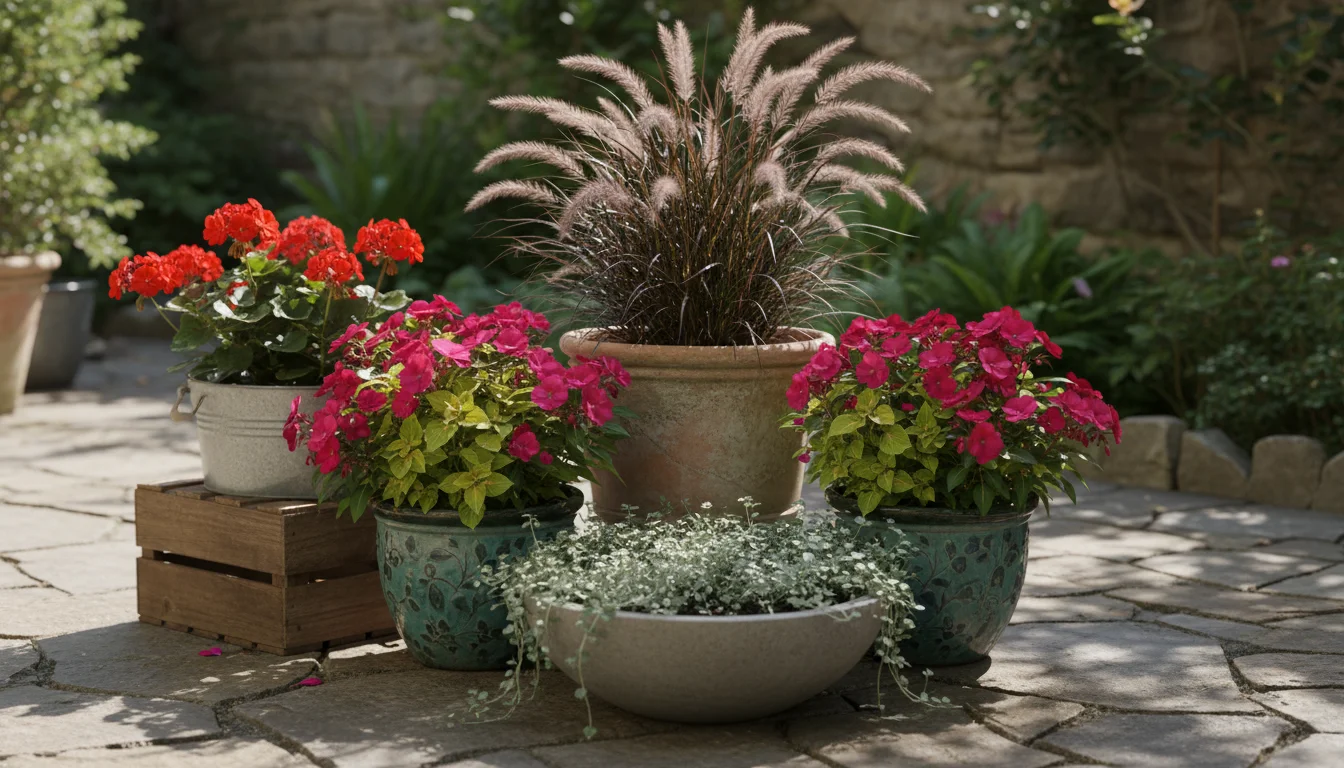
Group for Impact
Instead of scattering individual pots, group them together. Create clusters of three or five containers of varying heights and sizes. This arrangement creates a lush, abundant display, making the area feel more substantial and luxurious. The “thriller, filler, spiller” concept works wonderfully for container groupings: choose a tall plant (thriller) for dramatic height, medium-sized plants (fillers) to bulk out the pot, and trailing plants (spillers) to cascade over the sides. This technique creates visual interest and depth, elevating your budget garden design.
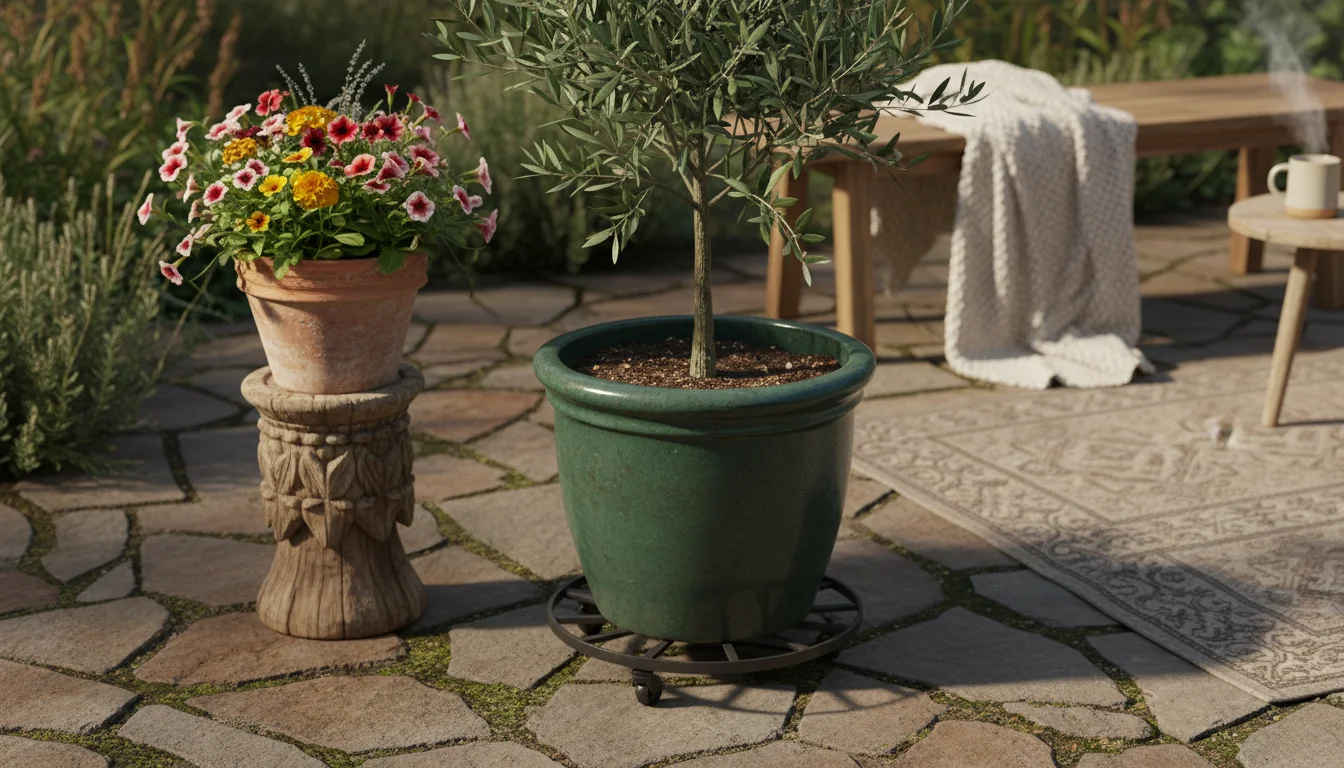
Utilize Wheeled Bases and Pot Feet
For larger containers, wheeled bases offer flexibility, allowing you to easily move plants for optimal sunlight or to rearrange your layout. Pot feet or risers lift containers slightly off the ground, improving drainage and air circulation. This prevents staining on your patio surface and helps roots stay healthier. You can create inexpensive pot feet using old bricks, flat stones, or even plastic bottle caps.
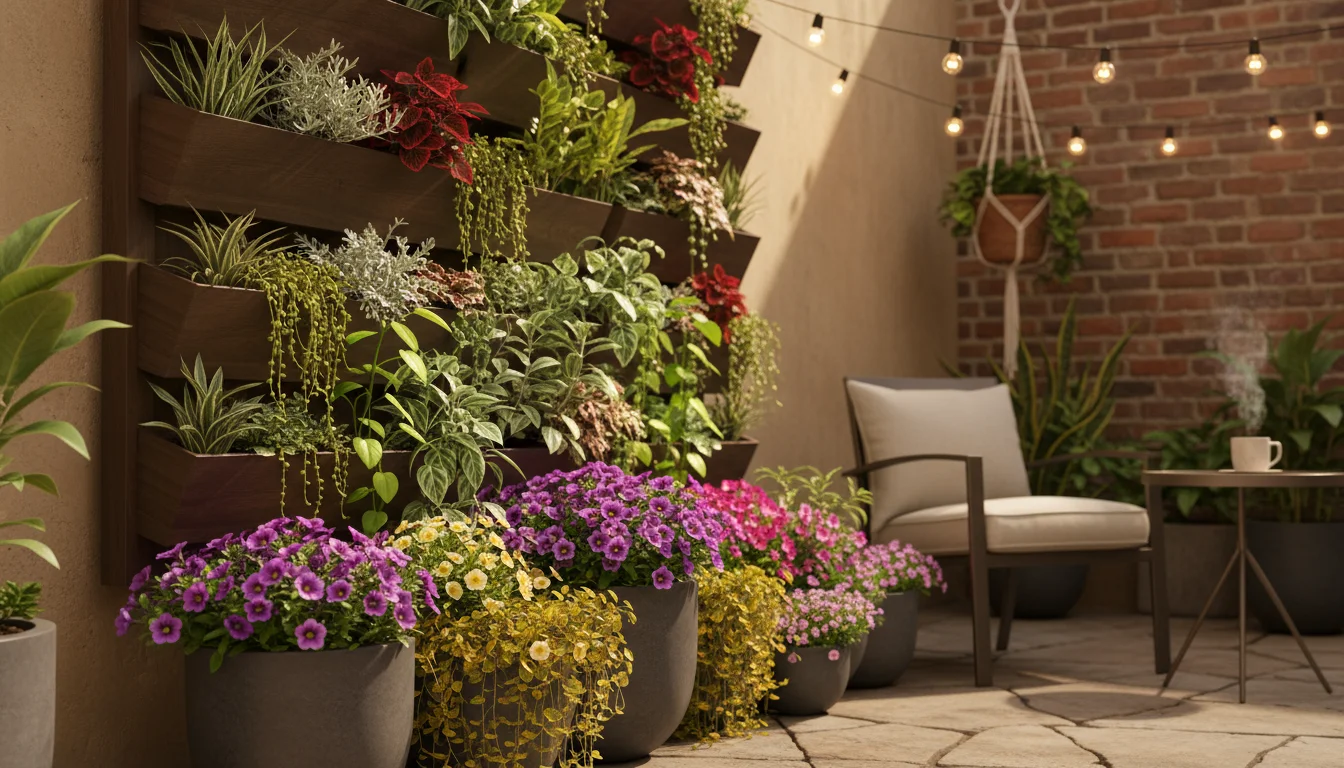
Vertical Gardening and Layers: Maximize Your Small Space
When you have limited ground space, look up. Vertical gardening and layering techniques add immense visual interest and plant capacity without consuming precious floor area. These methods are crucial for an affordable garden makeover, making your small space feel larger and more dynamic.
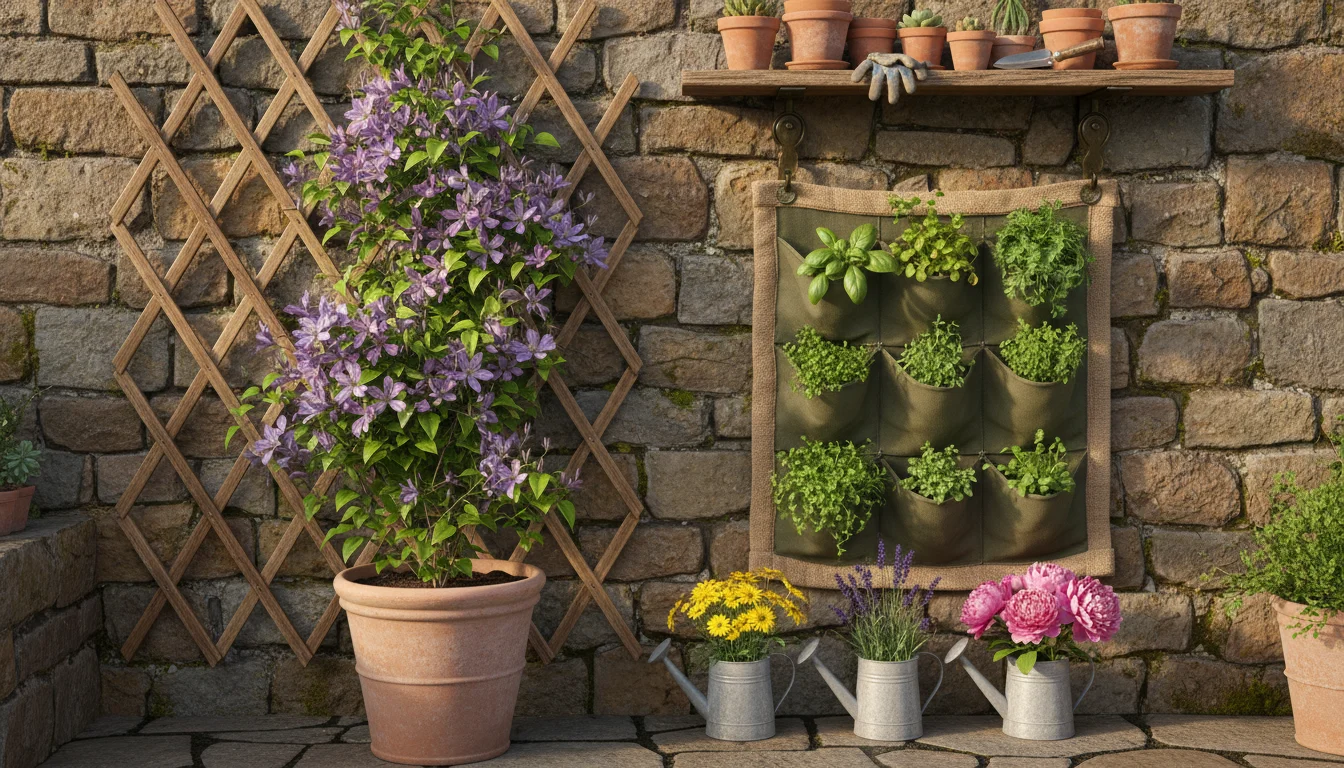
Embrace Trellises and Wall Planters
Install trellises against walls or fences for climbing plants like clematis, edible peas, or small gourds. You can construct simple trellises from bamboo stakes, reclaimed wood, or even old bed frames. Wall-mounted planters, such as repurposed shoe organizers or DIY pallet planters, allow you to grow herbs, succulents, or annual flowers directly on a vertical surface. These turn a plain wall into a living work of art, enhancing your budget garden design significantly.
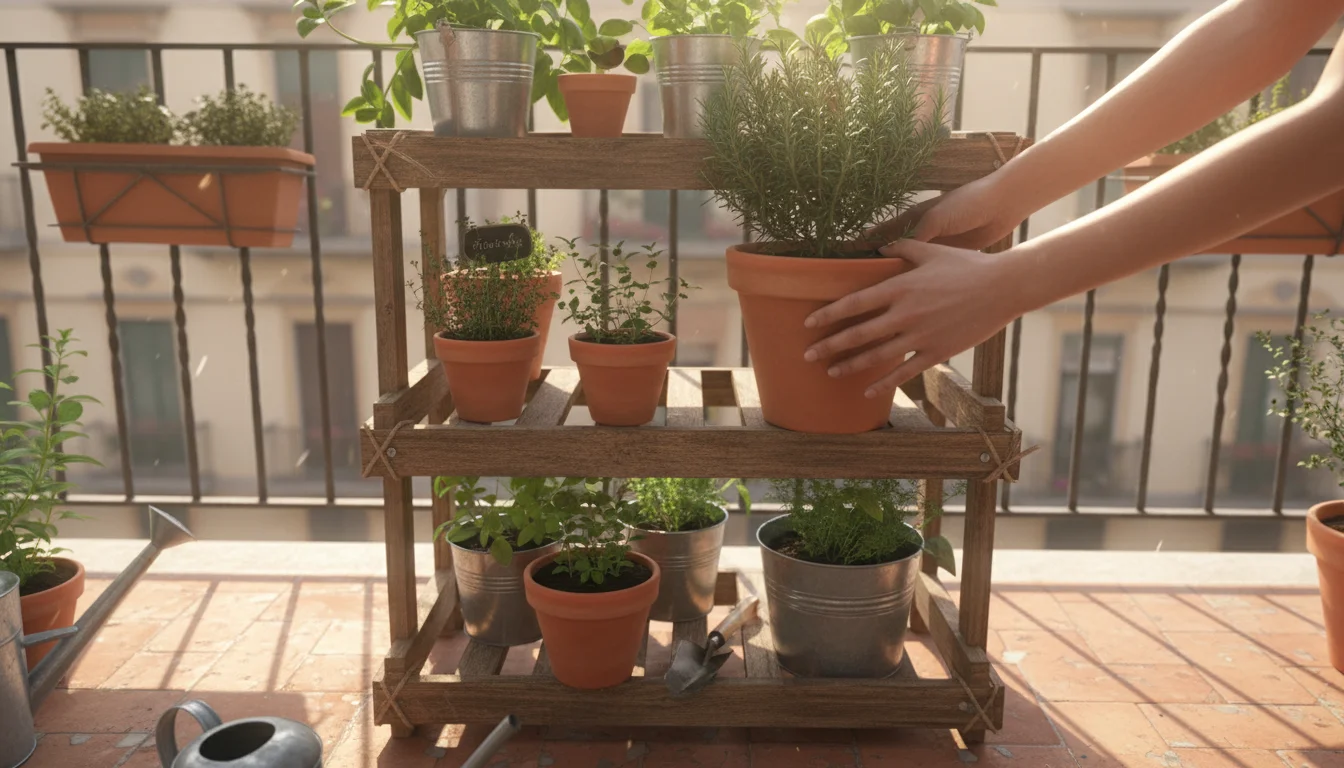
Tiered Stands and Shelving
Tiered plant stands or shelving units create multiple levels for containers. This layering technique allows you to grow more plants in a compact footprint. Look for inexpensive shelving units at hardware stores, or build your own from salvaged wood. This strategy is particularly effective for herb gardens or collections of small potted plants. The vertical arrangement adds depth and complexity, preventing the space from appearing flat or cramped.
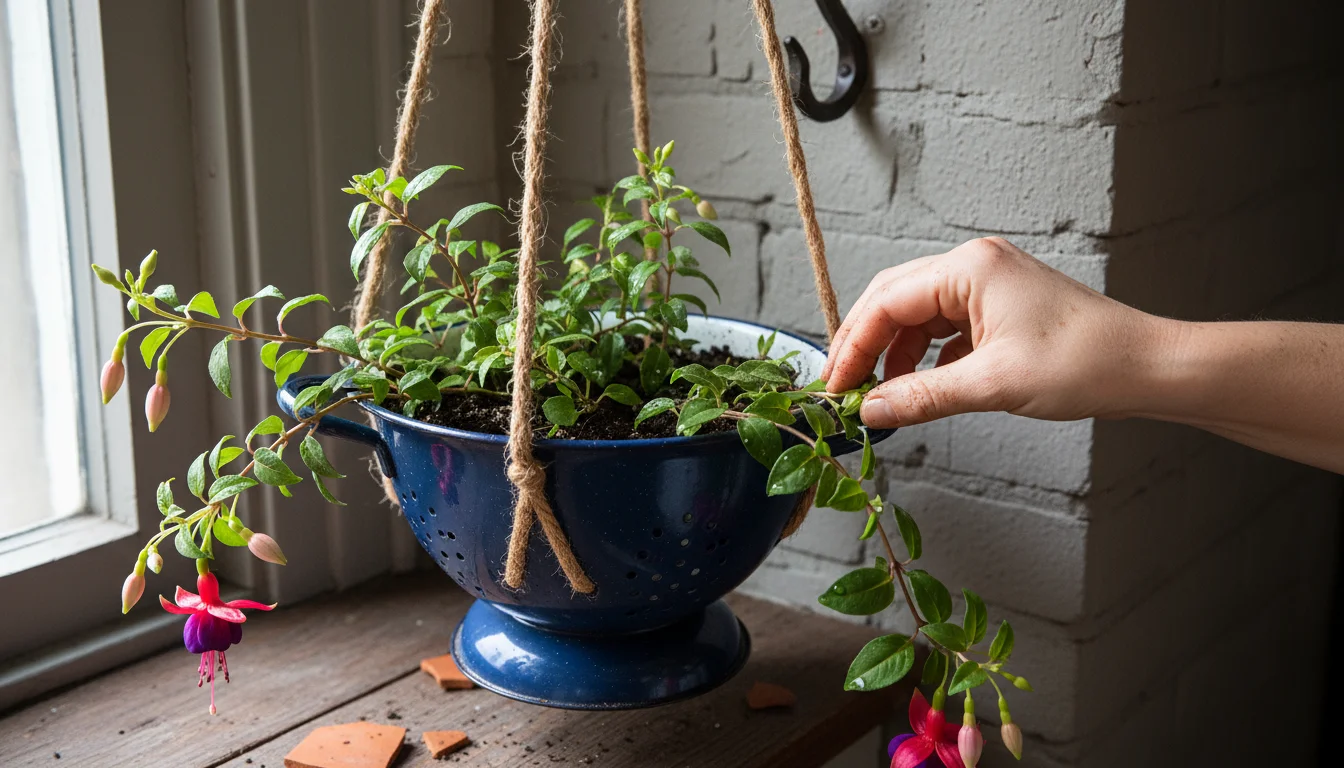
Hanging Baskets and Planters
Hang baskets from sturdy hooks on walls, pergolas, or ceilings. These add another dimension to your planting, creating a soft, cascading effect. Choose plants that trail well, such as petunias, fuchsias, or strawberries. Use strong, secure hooks to ensure safety. You can also craft hanging planters from repurposed materials like old colanders or coconut shells, adding a unique, artisanal touch to your affordable garden makeover.
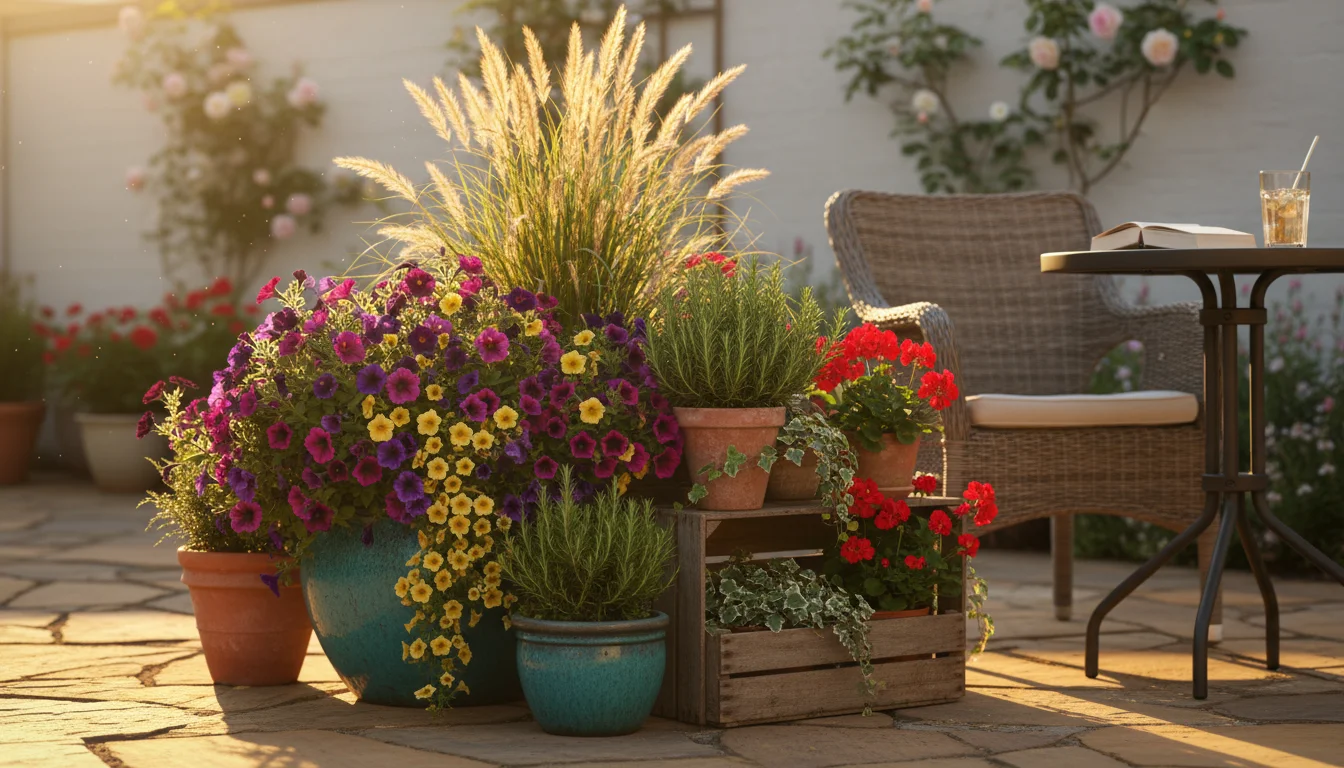
Create Height Transitions with Plants
Beyond hardware, use plants of varying heights to create visual layers. Place taller plants at the back or center of groupings, medium-sized plants in the middle, and shorter, trailing plants along the edges. This natural layering creates depth and makes the space feel lush and abundant. For example, a tall ornamental grass or a slender evergreen shrub provides a backdrop, while colorful annuals fill the mid-ground, and creeping thyme spills over the front.
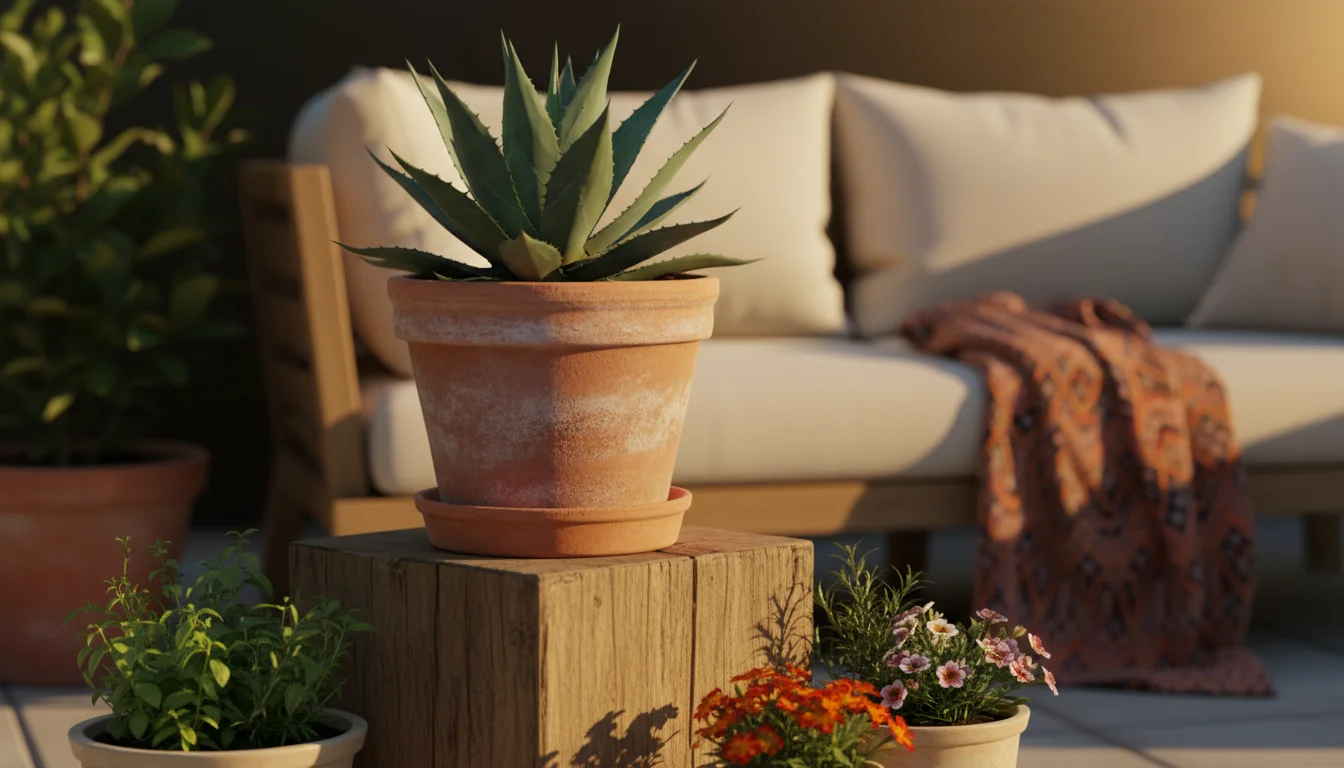
Creating Focal Points: Draw the Eye, Define Your Space
Every well-designed garden benefits from a focal point, which is the first thing your eye notices. A strong focal point gives your garden purpose and direction, making it feel more intentional and expensive. You can achieve this effect with minimal investment in your budget garden design.
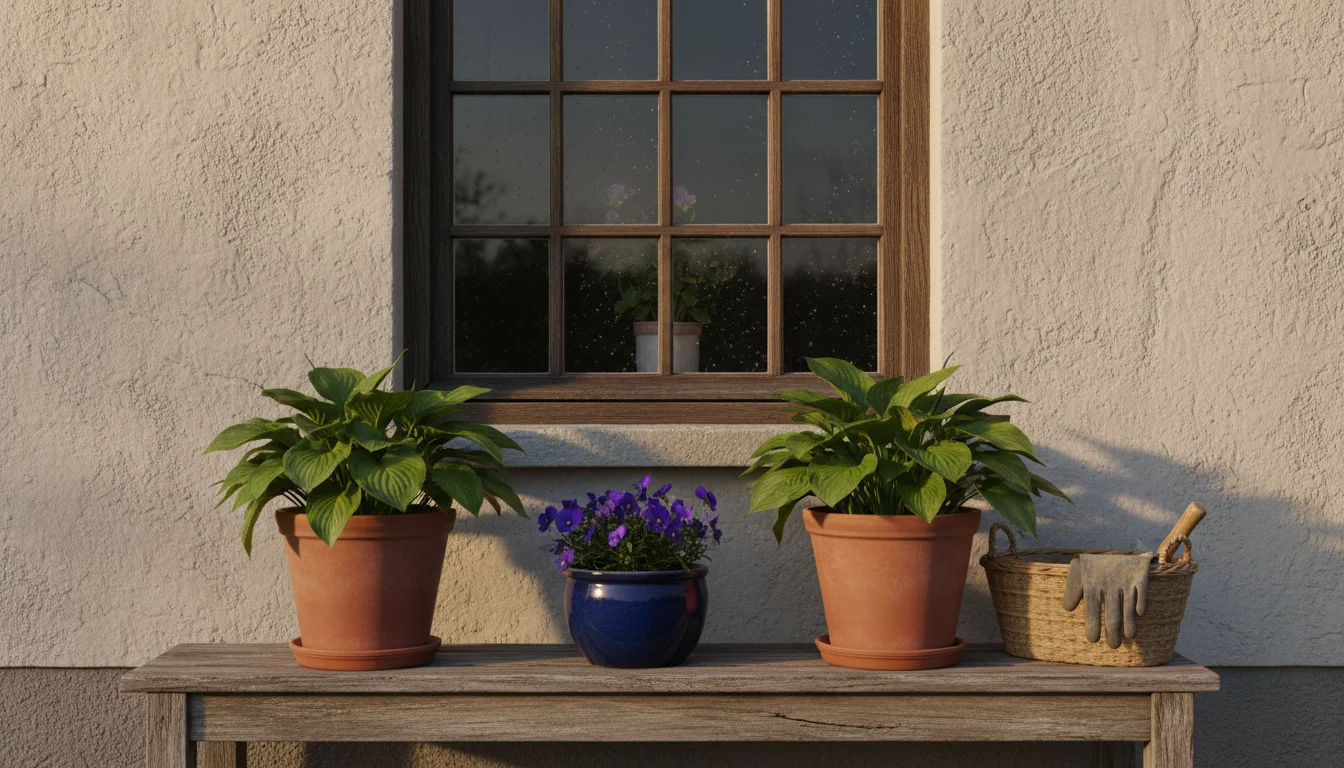
Utilize Existing Features
Look for existing elements in your space that can serve as a natural focal point. This could be a striking architectural feature, a mature plant, or a beautiful view. Enhance it rather than creating something new. For instance, if you have a charming window, place a small bench and a few potted plants beneath it to highlight its appeal. This approach saves money and capitalizes on your garden’s inherent character.
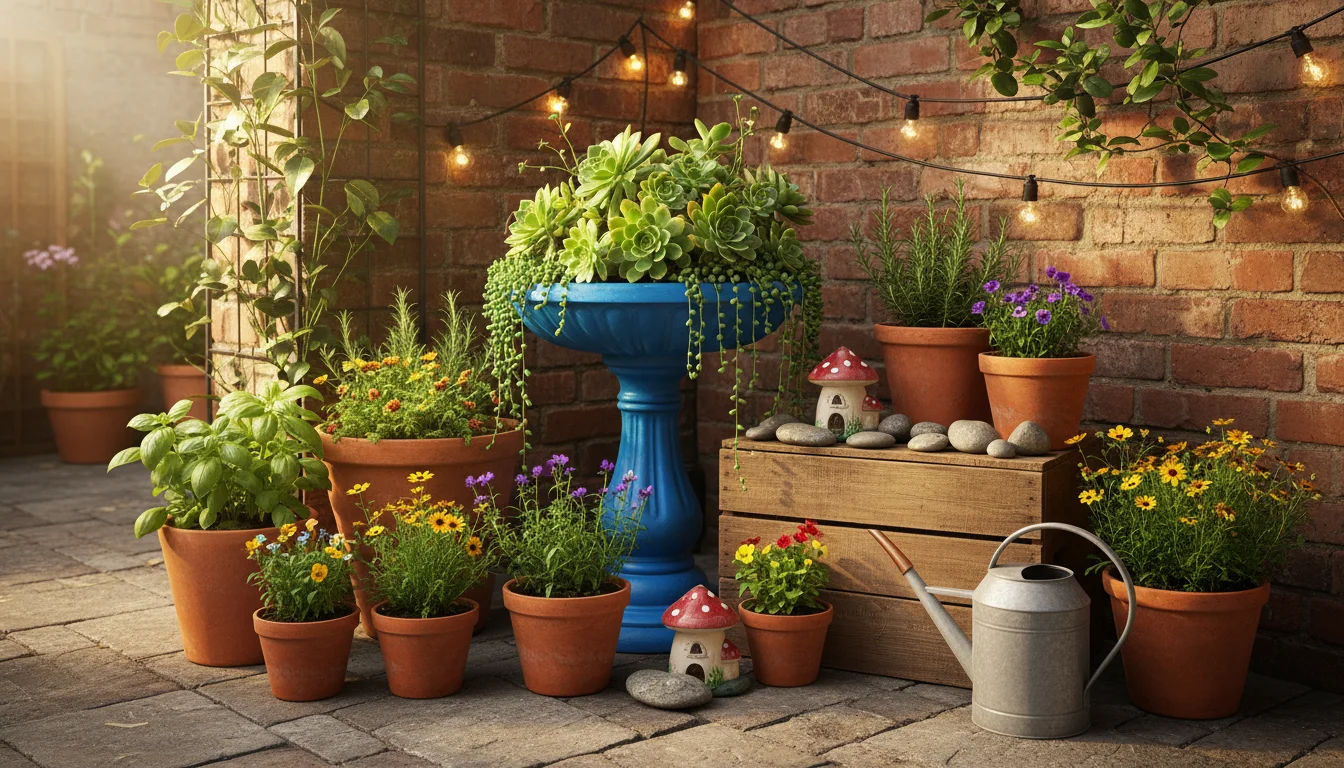
DIY Art and Sculptures
Transform everyday objects into garden art. An old bird bath, painted a vibrant color, becomes a compelling centerpiece. A collection of smooth river stones arranged artfully provides a calming visual. You can also create simple sculptures from reclaimed wood or metal scraps. These DIY elements add personality and uniqueness to your affordable garden makeover, drawing the eye without breaking the bank. For inspiration, consider visiting local art fairs or community gardens to see how others use salvaged materials.
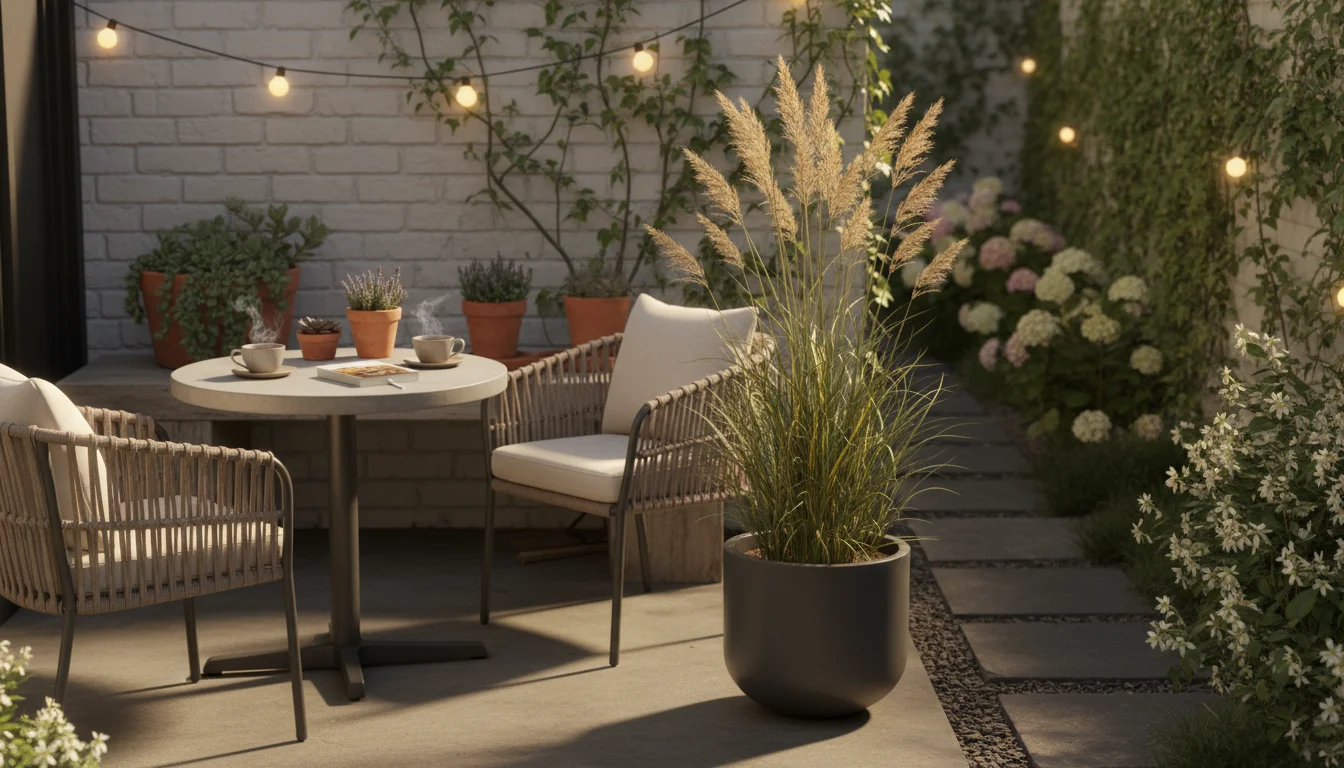
Strategic Plantings
A single, striking plant in an attractive container can act as a powerful focal point. Choose a plant with interesting foliage, a unique form, or vibrant flowers. An upright ornamental grass, a dwarf evergreen, or a dramatic canna lily can command attention. Place this focal plant where it is easily seen from your main viewing areas, such as your indoor window or your outdoor seating. The surrounding plants then complement, not compete with, your chosen centerpiece.
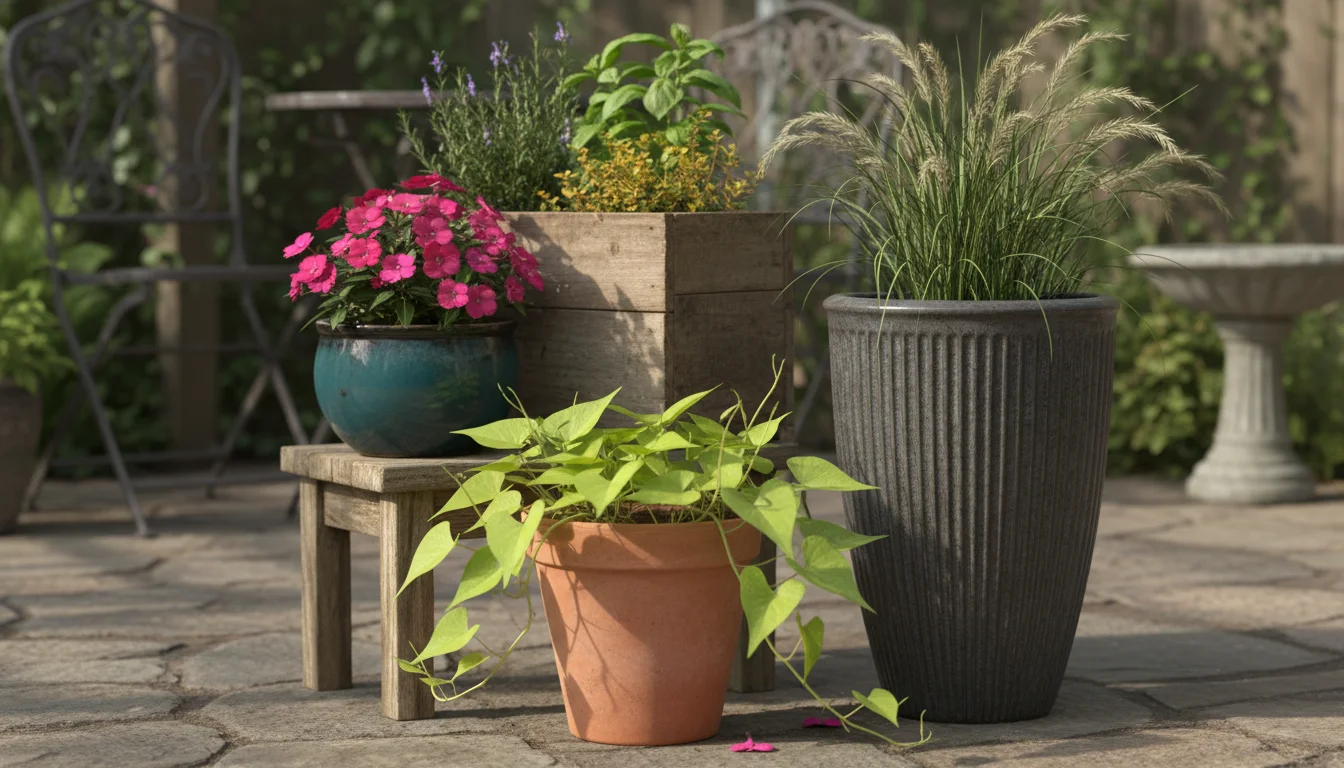
Consider Symmetry or Asymmetry
You can create a sense of balance through either symmetry or asymmetry. Symmetrical design, where elements mirror each other, often feels formal and elegant. Place identical planters on either side of a doorway, for example. Asymmetrical design, which balances different elements by their visual weight, creates a more relaxed, natural feel. This might involve grouping a tall planter with several smaller ones to achieve visual equilibrium. Both approaches work for budget garden design, depending on the aesthetic you prefer.
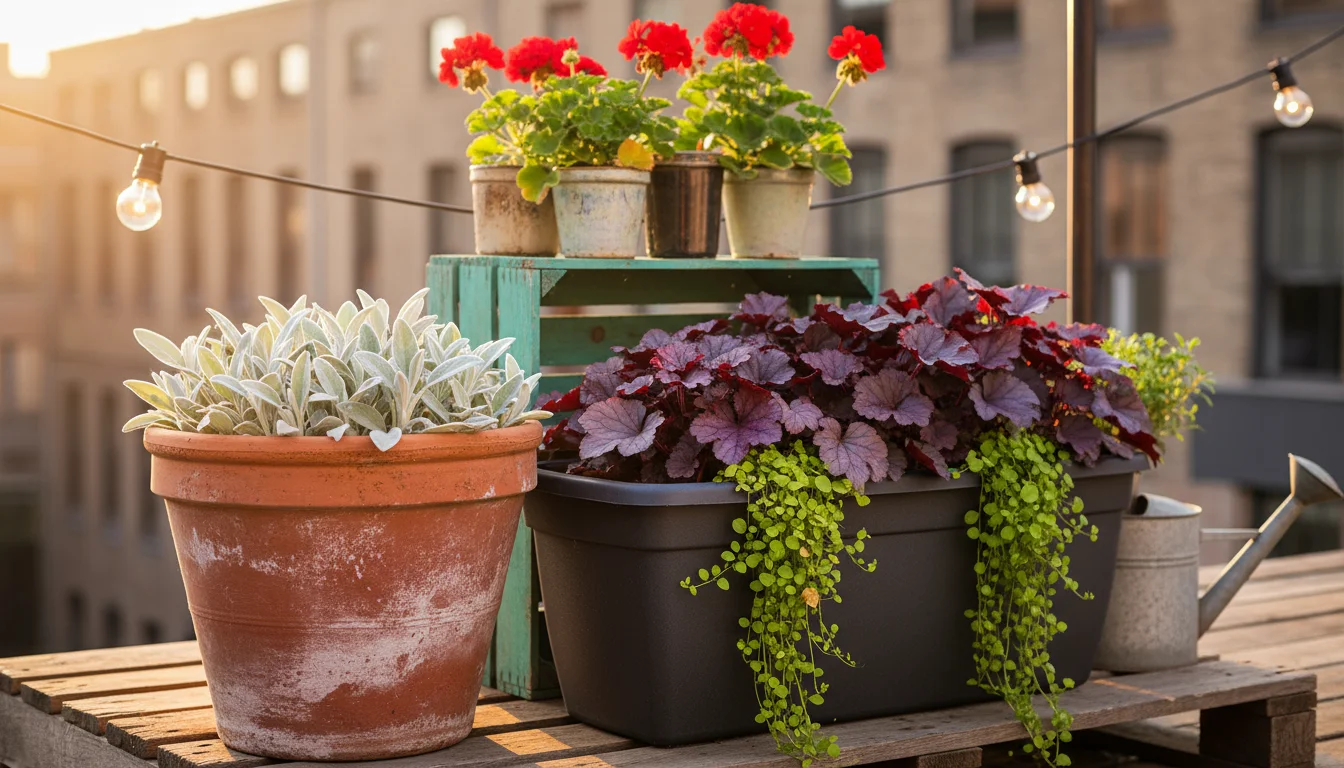
Mastering Color and Texture Palettes on a Budget
Color and texture are powerful design tools that profoundly influence the feel of your garden. A well-chosen palette makes your space feel cohesive and sophisticated, even with inexpensive plants and materials. Focus on creating contrast and harmony to achieve an expensive look on a budget.
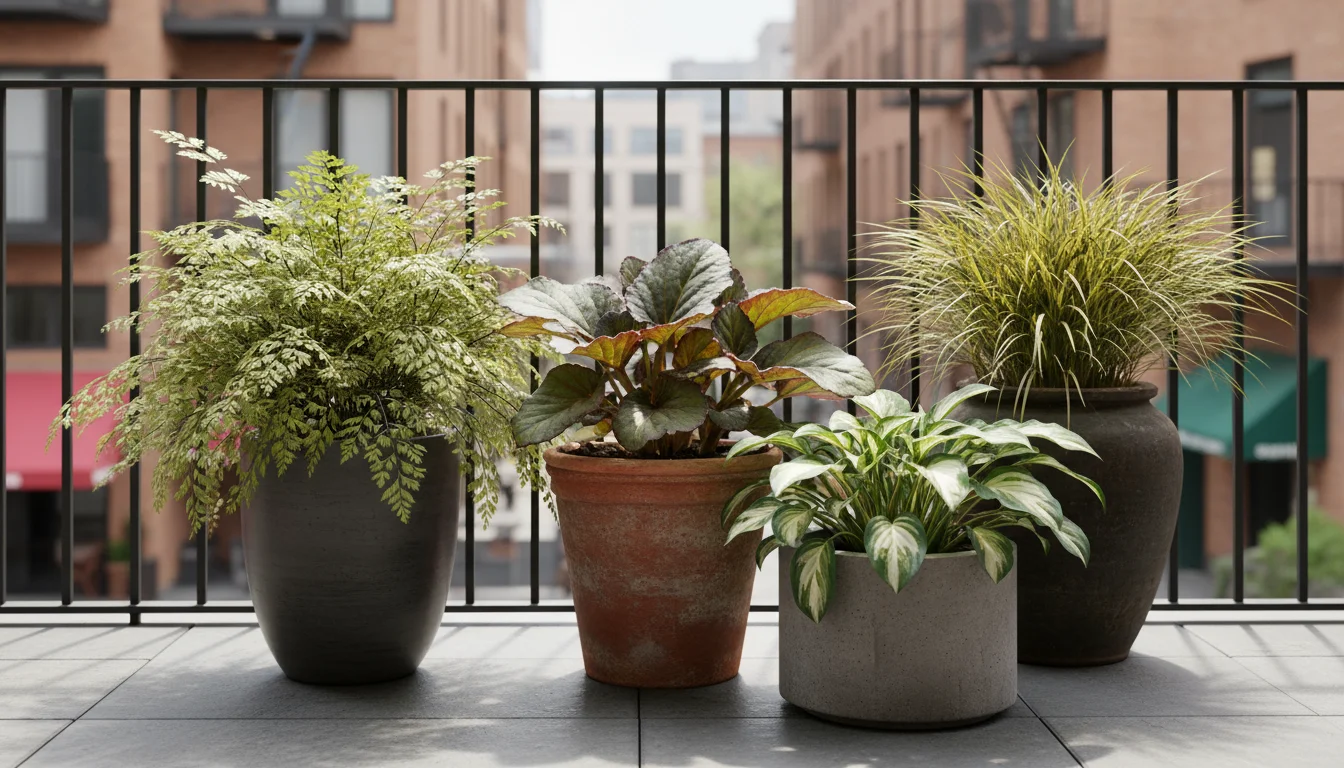
Emphasize Foliage Over Flowers
While flowers provide bursts of color, they are often ephemeral. Focus on plants with interesting foliage textures and colors. This provides year-round appeal and a consistent design aesthetic. Consider plants with variegated leaves, deep purple hues, or silvery-green tones. Mixing fine-textured foliage (like ferns) with bold-textured leaves (like hostas) creates dynamic visual contrast. For instance, you might pair the delicate fronds of a maidenhair fern with the broad leaves of a bergenia. This strategy is cost-effective because foliage plants are often more affordable and require less maintenance than those grown purely for their blooms. The Missouri Botanical Garden offers excellent resources on selecting plants for foliage interest.
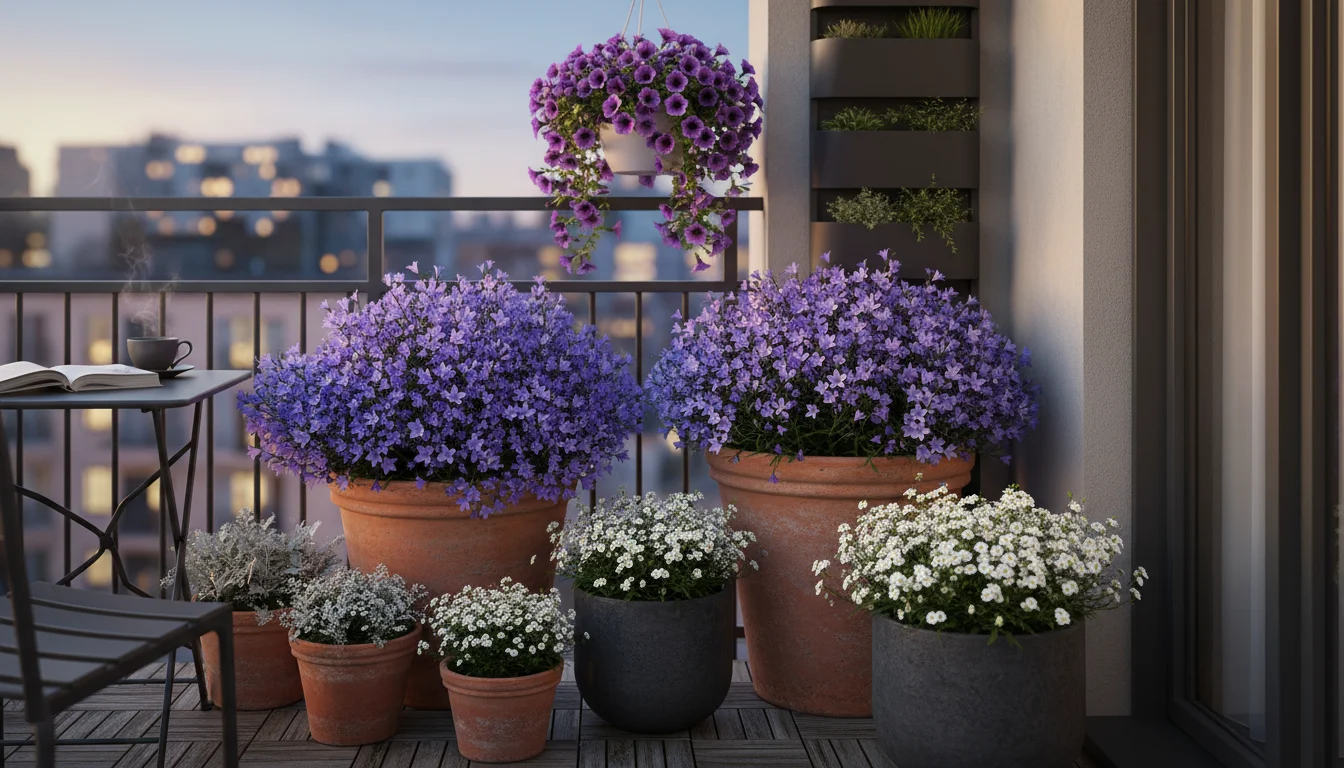
Limit Your Color Palette
A restricted color palette often looks more sophisticated than a riot of many colors. Choose two to three main colors for your flowers and accessories. For example, a cool palette of blues, purples, and whites creates a serene atmosphere. A warm palette of reds, oranges, and yellows offers vibrancy. Using a monochromatic scheme, featuring different shades of a single color, creates a highly elegant and tranquil garden. This intentional choice makes your budget garden design appear carefully curated.
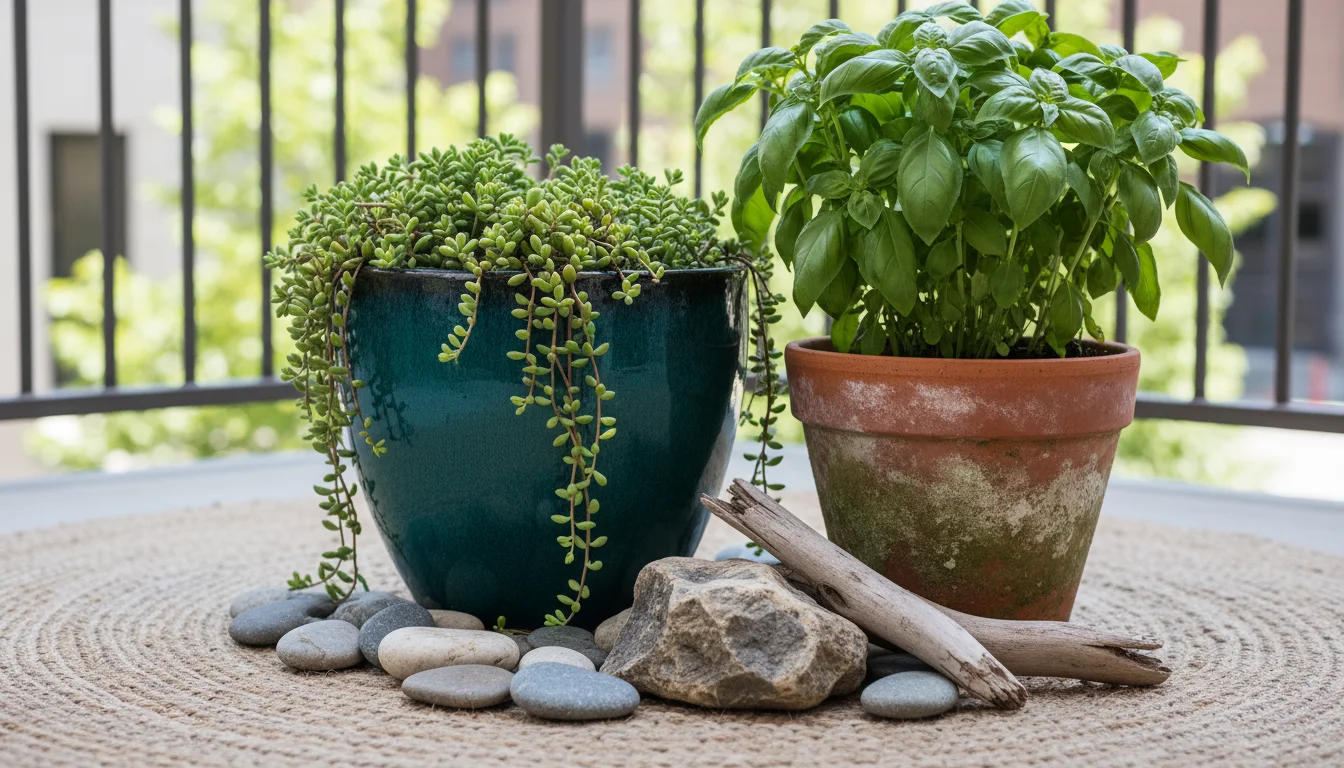
Introduce Texture with Hardscaping and Accessories
Beyond plants, incorporate texture through your hardscaping and garden accessories. Rough-hewn stones, smooth river pebbles, weathered wood, or a textured outdoor rug add depth and interest. A ceramic pot with a glazed finish next to a terracotta pot offers pleasing contrast. These elements contribute to the overall tactile experience of your garden, making it feel richer and more complex.
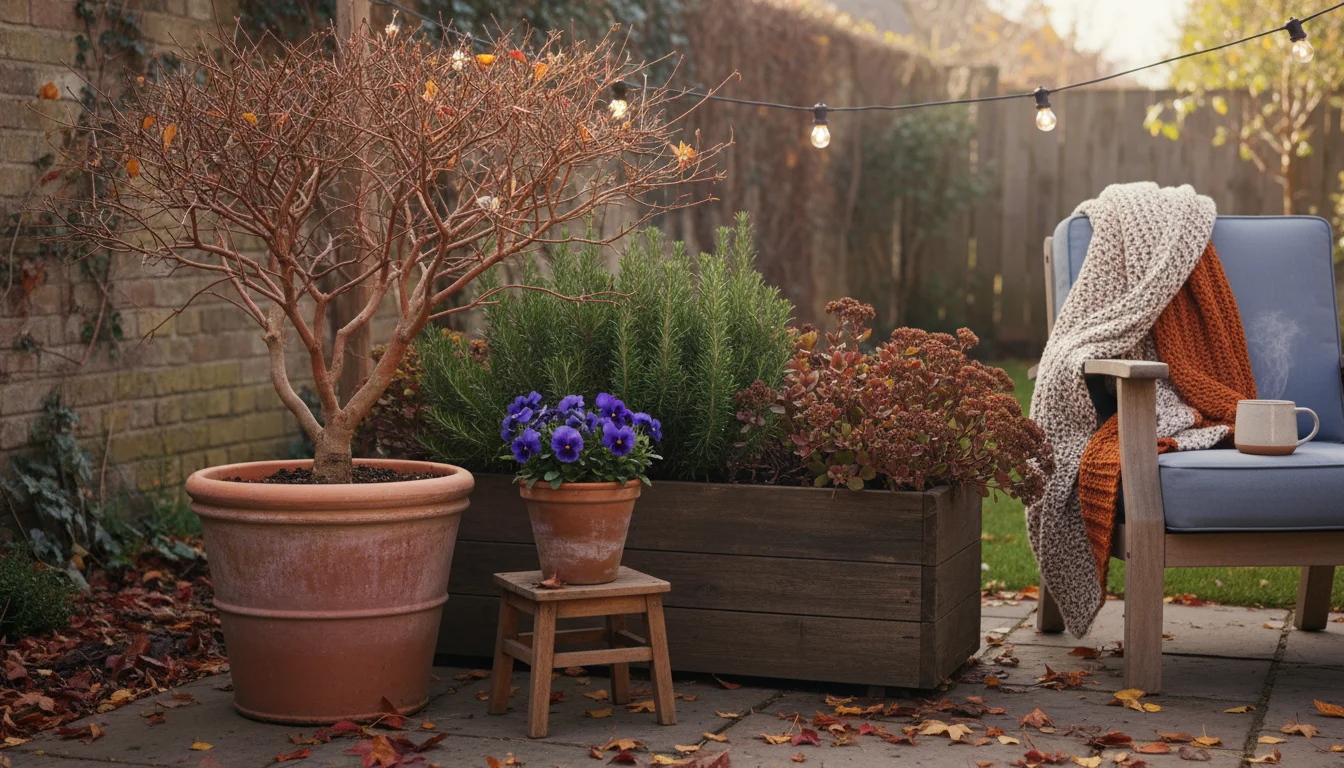
Plan for Seasonal Interest
Consider how your garden will look throughout the year. Select plants that offer interest across multiple seasons, whether through their flowers, foliage, berries, or bark. For example, a small deciduous tree with attractive winter bark provides year-round appeal. Spring bulbs emerge early, followed by summer annuals and perennials, then plants with autumn color or winter berries. This thoughtful planning ensures your affordable garden makeover remains captivating regardless of the season.
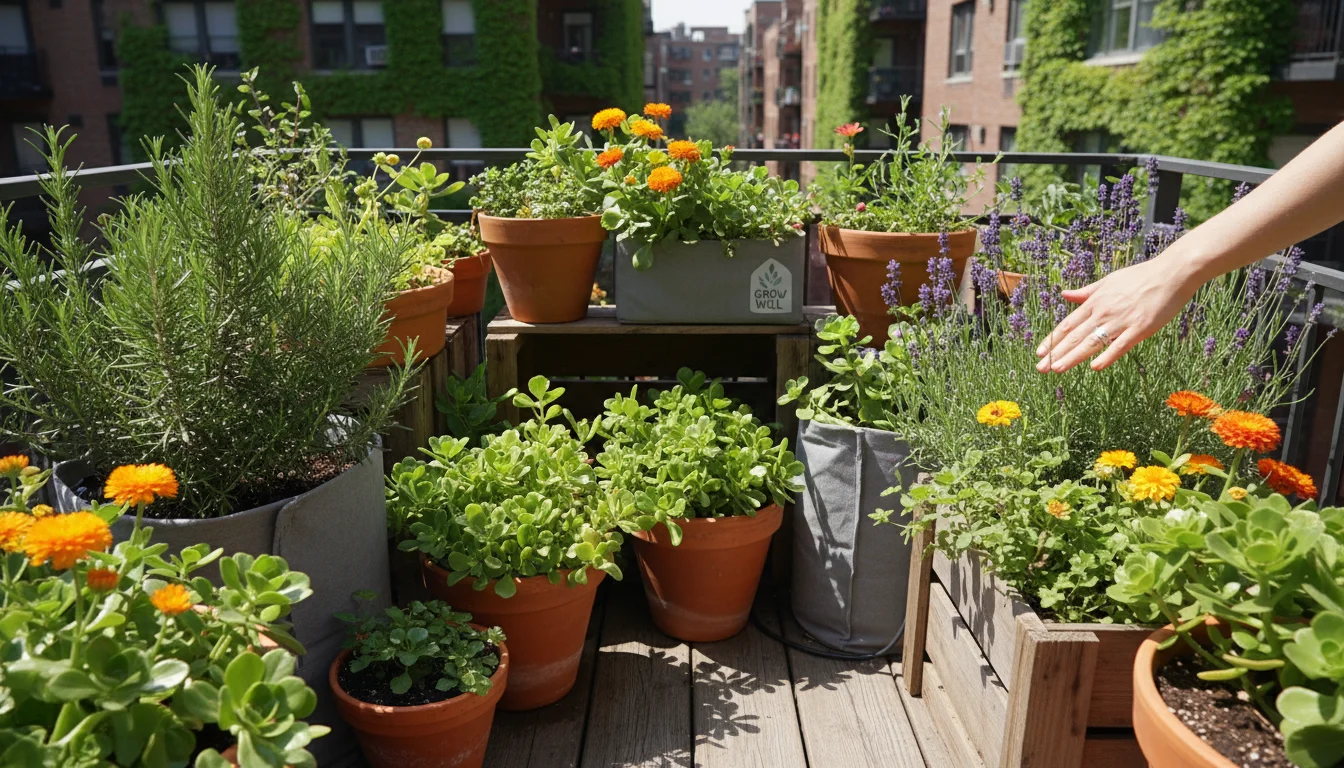
Smart Planting Choices: High Impact, Low Cost, Sustainable Growth
The plants you choose form the heart of your garden. Smart planting choices save you money, reduce maintenance, and support local ecosystems. Prioritize sustainable, resilient plants for your budget garden design.
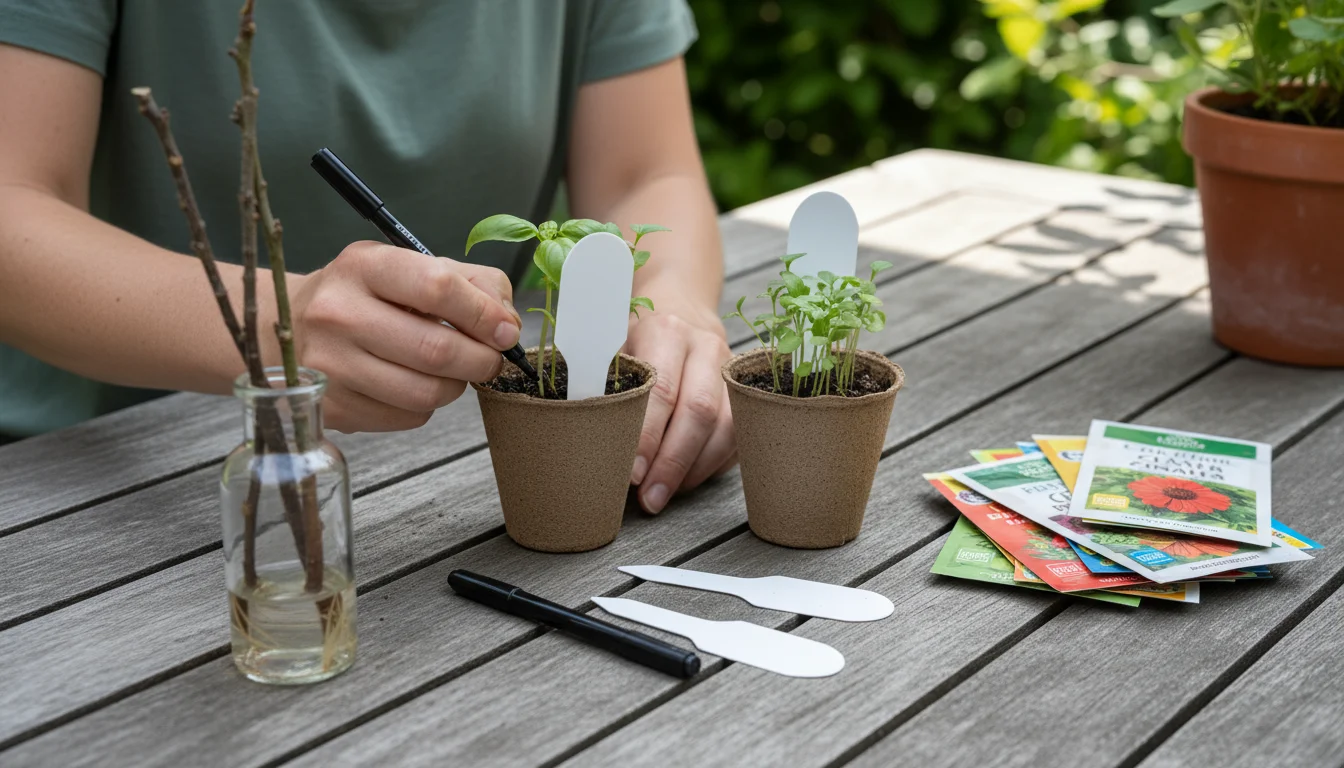
Start from Seed or Cuttings
Purchasing mature plants is convenient but expensive. Starting plants from seed or propagating from cuttings offers a significantly cheaper alternative. Many annuals, herbs, and even some perennials grow readily from seed. Ask friends and neighbors for cuttings from their healthy plants. This method requires patience but yields many plants for minimal cost. You can also find seed swaps at local gardening clubs.
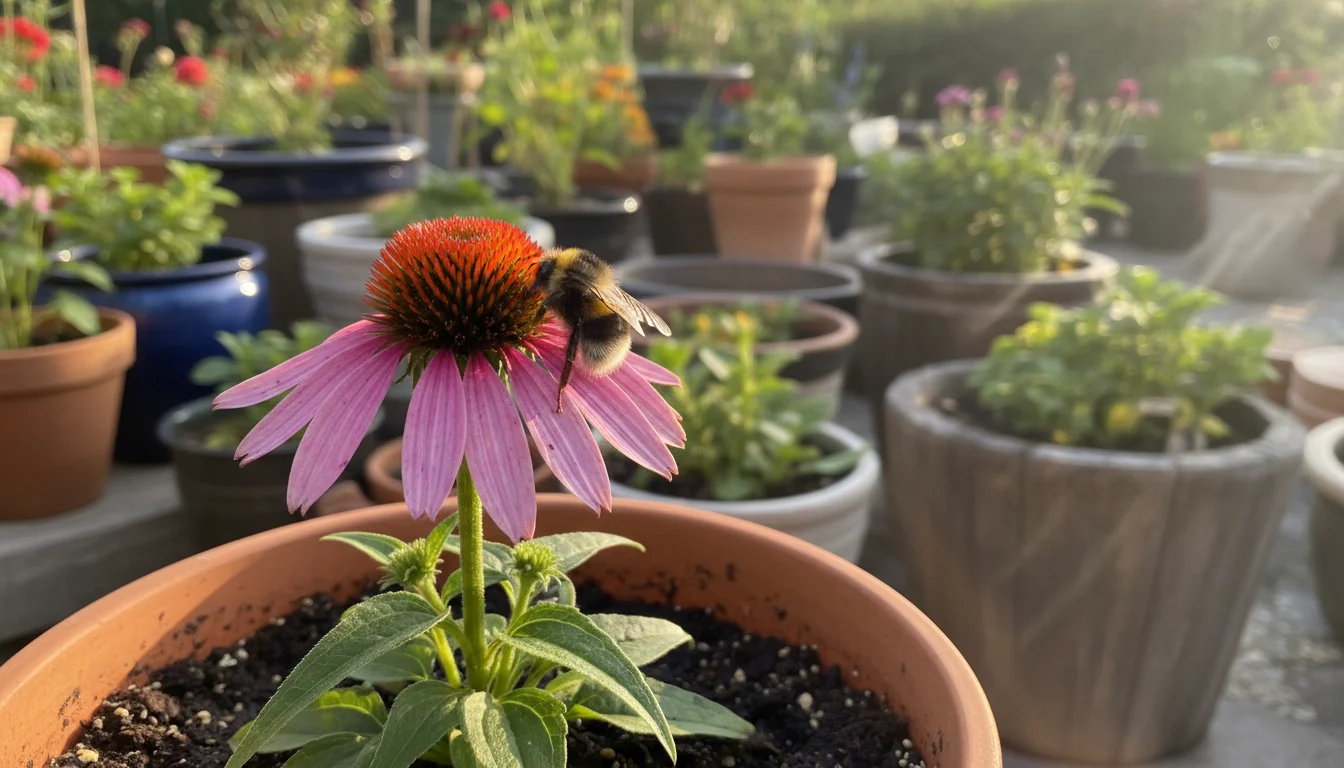
Choose Native and Pollinator-Friendly Plants
Native plants are naturally adapted to your local climate and soil conditions, meaning they require less water, fertilizer, and pest control once established. This dramatically reduces long-term maintenance costs and environmental impact. Many native plants also support local pollinators like bees and butterflies, contributing to biodiversity. For region-specific plant recommendations, consult your local agricultural extension service or a native plant society. The New York Botanical Garden offers extensive resources on native plant gardening and ecological benefits.
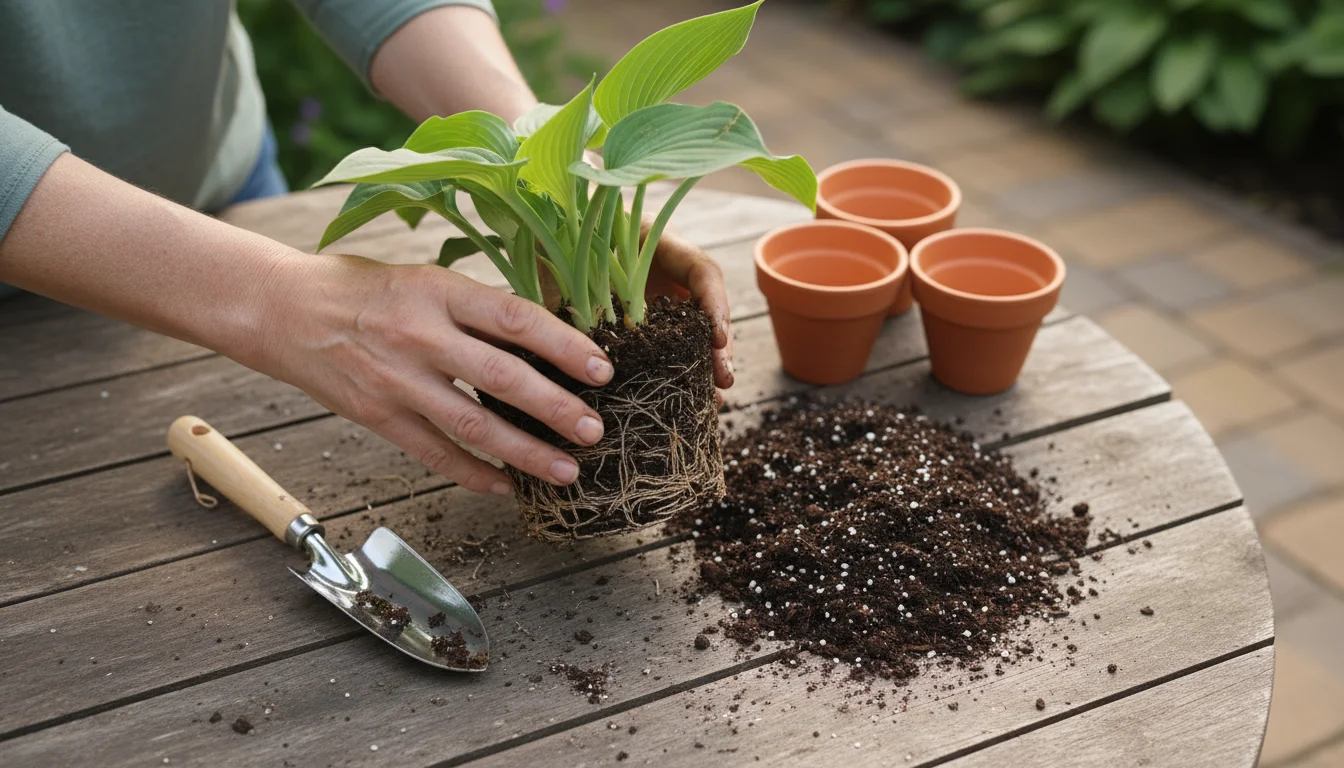
Embrace Perennials and Divisions
Perennials return year after year, eliminating the need to replant annually. While initial perennial costs might be higher than annuals, their longevity makes them more cost-effective over time. Furthermore, many perennials can be divided every few years, giving you new plants for free to expand your garden or share with others. Look for perennial divisions at plant swaps or from generous gardening friends. This practice helps your affordable garden makeover grow over time without continuous expense.
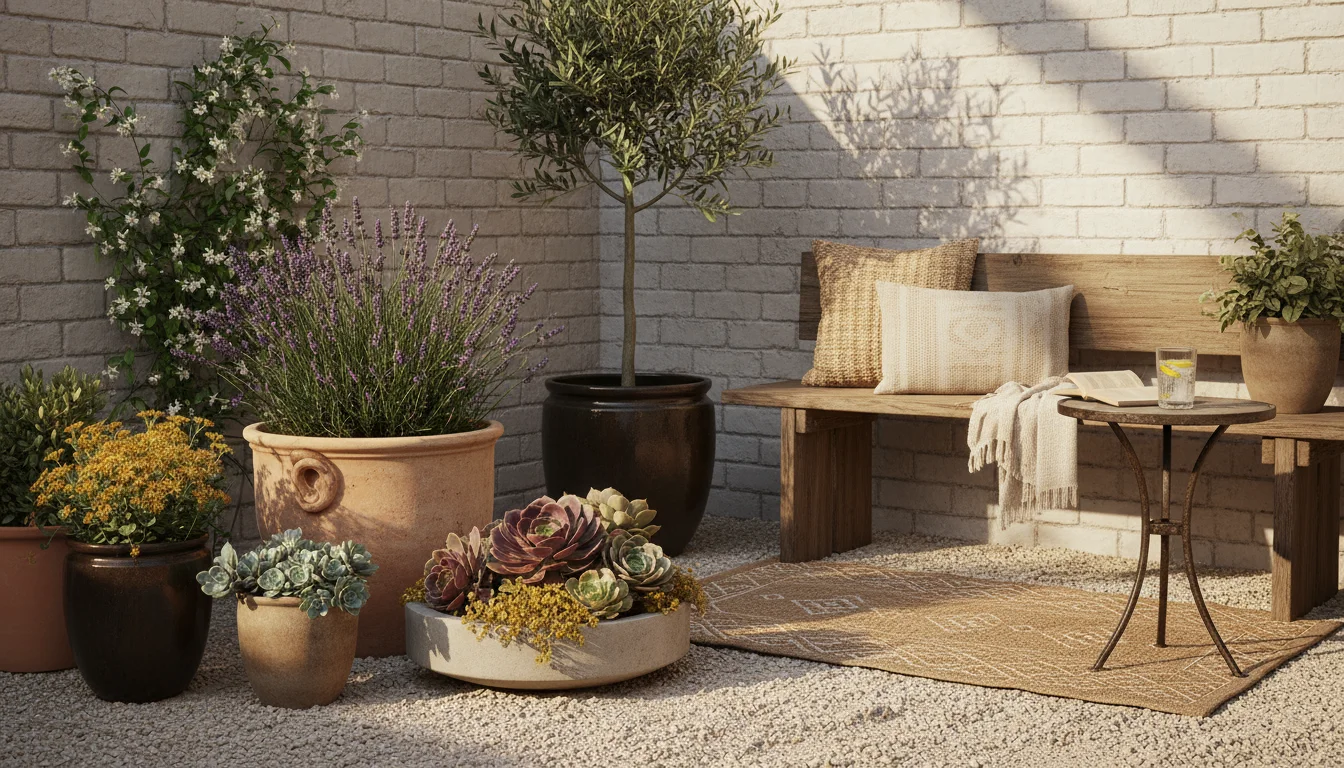
Select Water-Wise Plants
Water is a precious resource, and excessive watering costs money. Choose drought-tolerant plants, often called xeriscape plants, that thrive with minimal irrigation once established. Succulents, sedums, lavender, and many ornamental grasses are excellent choices for water-wise gardening. Group plants with similar water needs together to optimize your watering routine. This thoughtful selection reduces your water bill and conserves resources, making your budget garden design more sustainable.
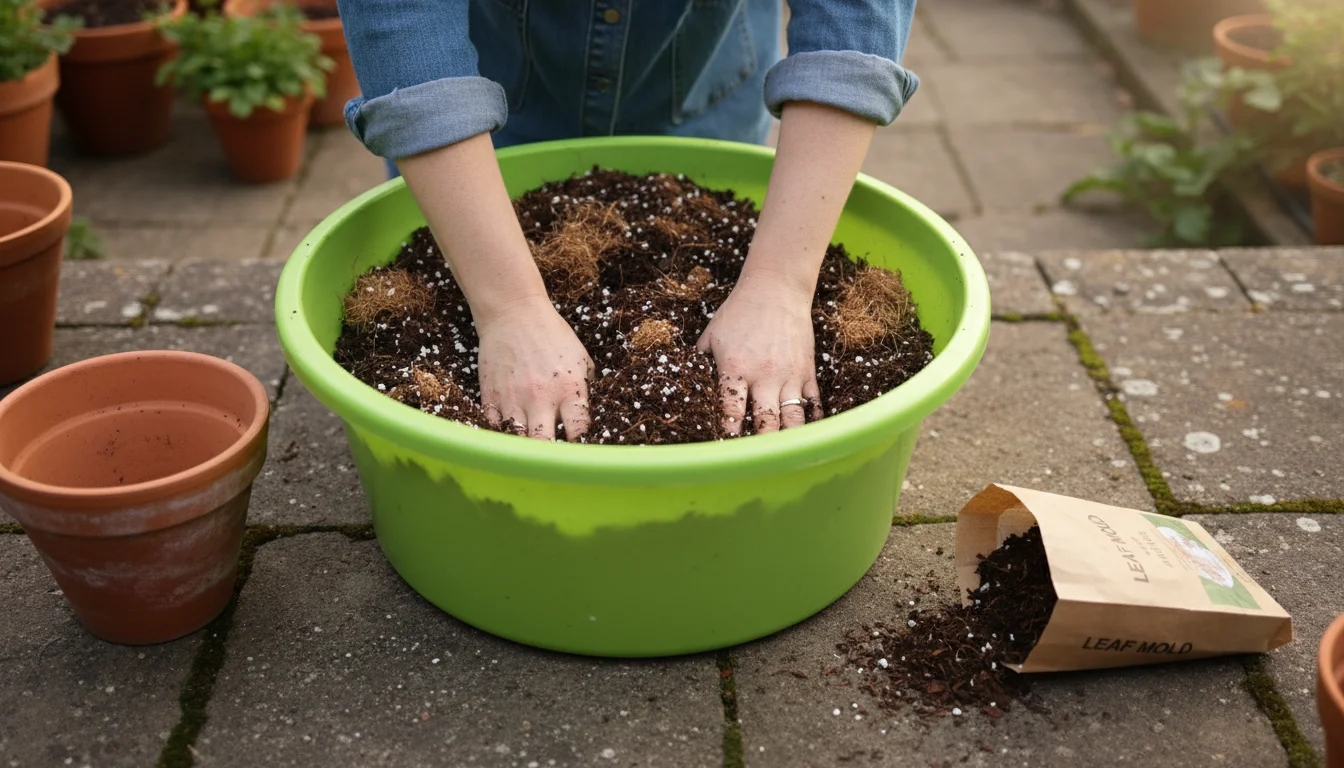
Improve Your Soil with Composted Materials
Healthy soil is the foundation of a thriving garden. Instead of buying expensive amendments, enrich your soil with free or low-cost organic matter like homemade compost, leaf mold, or aged wood chips. Compost improves soil structure, drainage, and nutrient retention, leading to healthier, more resilient plants. Many communities offer free compost or wood chips. For container gardening, use a peat-free potting mix. Peat harvesting has environmental concerns, so choosing alternatives supports sustainable practices. A good quality potting mix often includes coir, compost, and perlite.
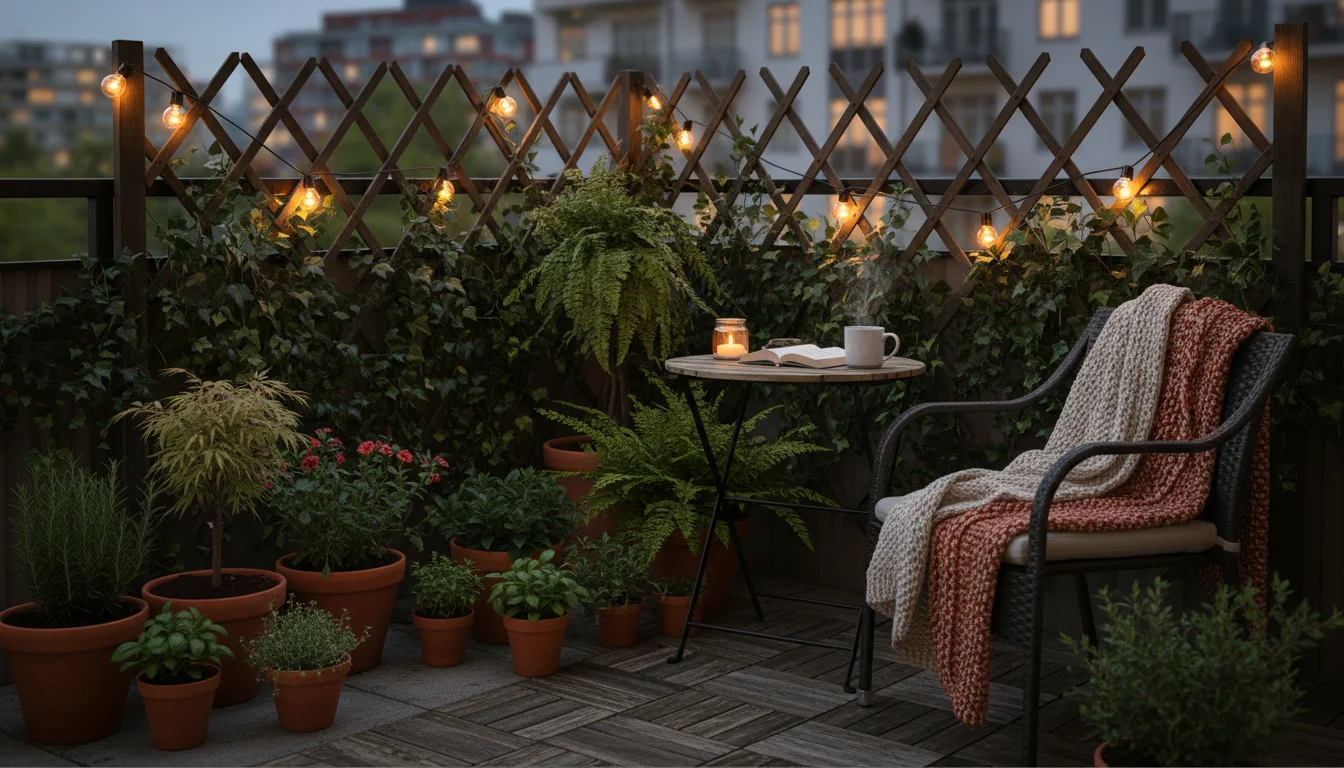
Strategic Lighting and Privacy: Setting the Mood for Less
Thoughtful lighting and privacy solutions elevate your garden’s ambiance, making it feel luxurious and functional, especially in the evening. You can achieve these effects with inexpensive materials and smart placement in your budget garden design.
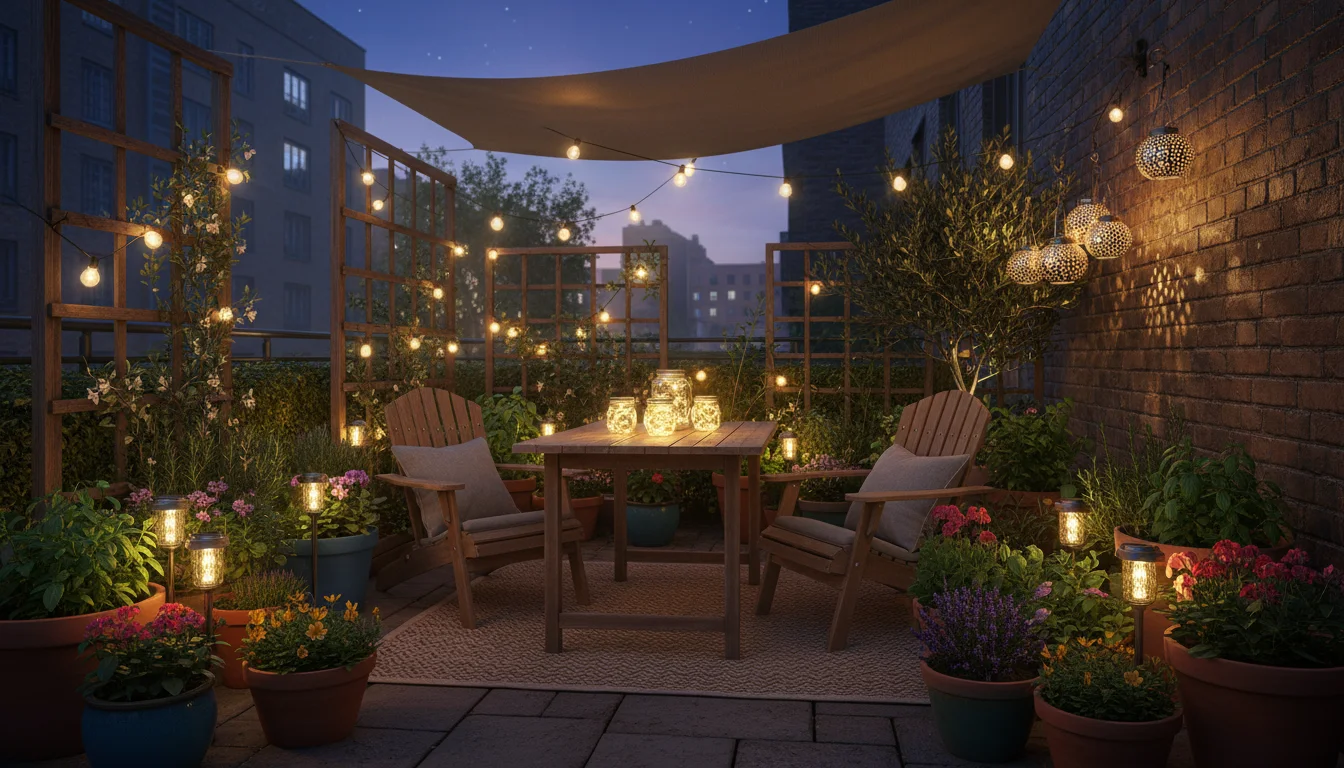
Affordable Lighting Solutions
Solar Lights: Solar-powered stake lights or string lights require no wiring and cost nothing to operate after the initial purchase. Place stake lights along pathways or to highlight specific plants. Drape solar string lights across railings, overhead structures, or through shrubbery for a magical glow. They create an inviting atmosphere perfect for evening enjoyment. Ensure you purchase quality solar lights that provide adequate illumination and withstand outdoor conditions.
LED String Lights: For areas with access to an outdoor outlet, low-energy LED string lights offer bright, durable illumination. Look for commercial-grade string lights with replaceable bulbs for longevity. These provide a sophisticated, café-style ambiance. Always ensure outdoor lighting is rated for outdoor use and properly installed for safety.
Repurposed Lanterns: Fill old glass jars or lanterns with battery-operated fairy lights or LED candles. These provide soft, diffused light and add a charming, rustic touch. Group them on tables, hang them from hooks, or place them along steps for gentle guidance after dark.
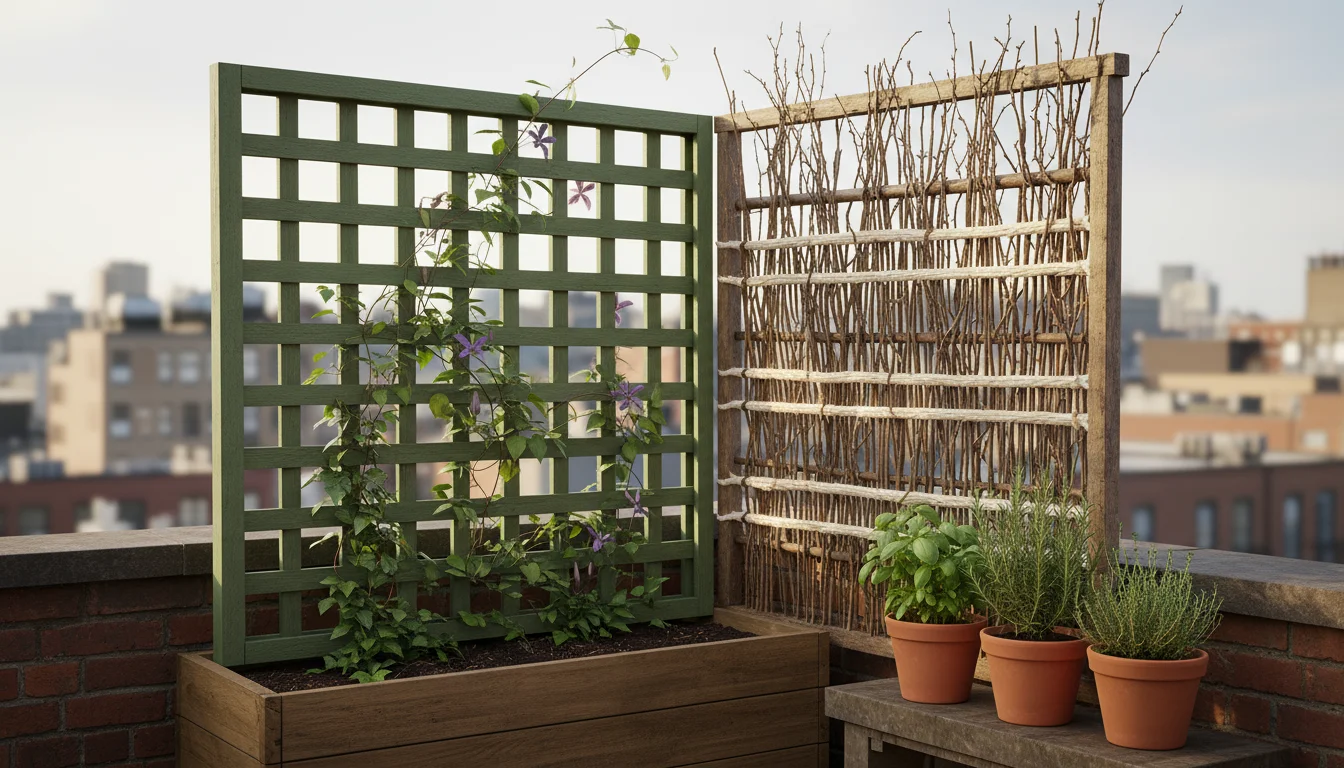
Creative Privacy Screening
Lattice Panels: Inexpensive wooden or plastic lattice panels provide a base for climbing plants, quickly creating a green screen. You can paint lattice to match your aesthetic. Install them directly to existing fences or secure them to posts in containers for a mobile screen. This offers instant privacy and a beautiful backdrop for your budget garden design.
Bamboo Frames: Construct simple frames from bamboo poles and weave natural materials through them, such as willow branches, rushes, or even thick yarn. This creates a natural, breathable screen that adds organic texture to your space. You can often find bamboo poles affordably at garden centers or even forage for suitable branches if permitted in your area.
Tall Planters with Strategic Plants: Use tall, slender planters filled with fast-growing, dense plants like clumping bamboo (non-invasive varieties), ornamental grasses, or tall shrubs. Place these planters strategically where you need to block an undesirable view or create a sense of enclosure. This method offers flexible privacy, as you can move the planters as needed. For example, a row of three tall planters with ‘Sky Pencil’ hollies or ornamental grasses provides excellent screening for a patio.
Outdoor Fabric Screens: Hang outdoor fabric panels or inexpensive sheer curtains from a simple rod or wire to create temporary privacy. Choose weather-resistant fabrics that complement your garden’s color scheme. This option offers a soft, airy feel and can be easily removed or adjusted. For a durable option, consider repurposing canvas drop cloths.
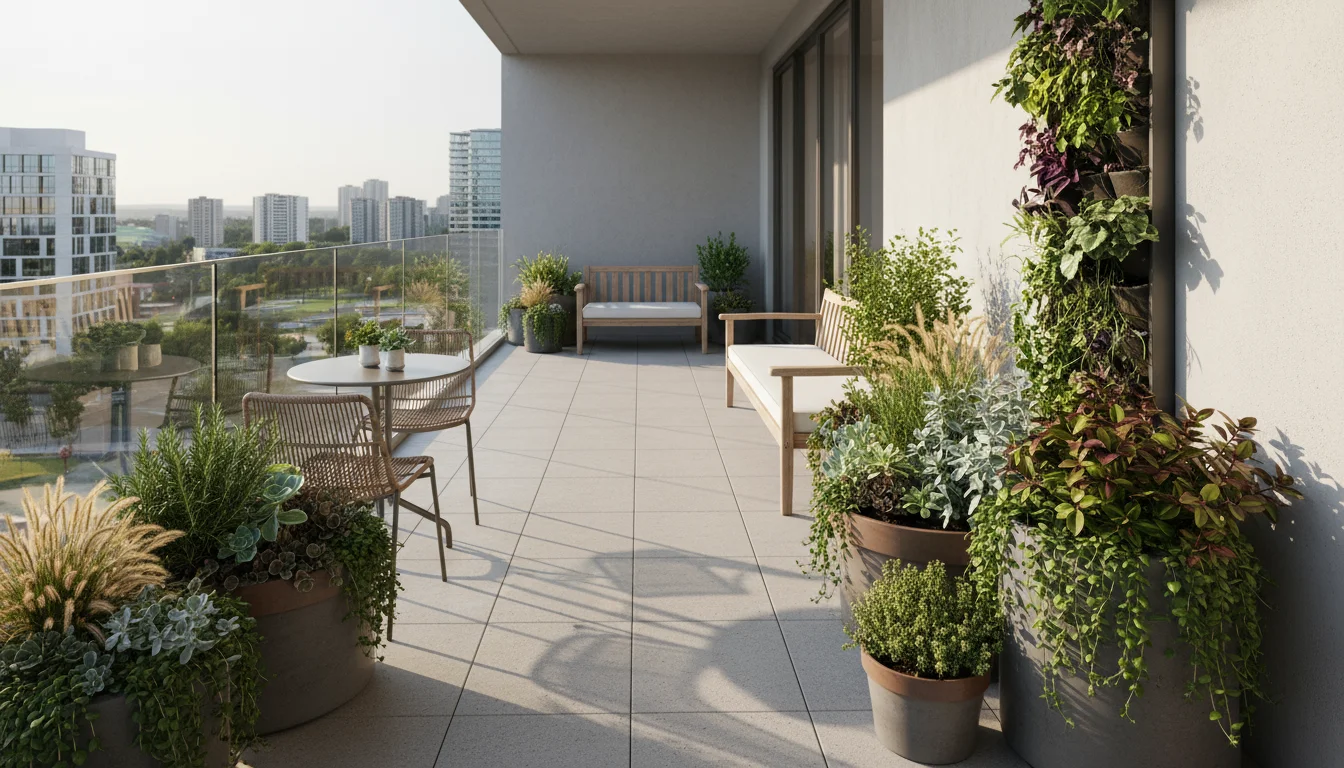
Design for Low Maintenance: Keep Your Garden Looking Pristine Easily
A garden that looks expensive is typically well-maintained. Designing for low maintenance from the start ensures your garden stays beautiful without consuming all your free time or requiring constant spending. This is a core principle of an effective budget garden design.
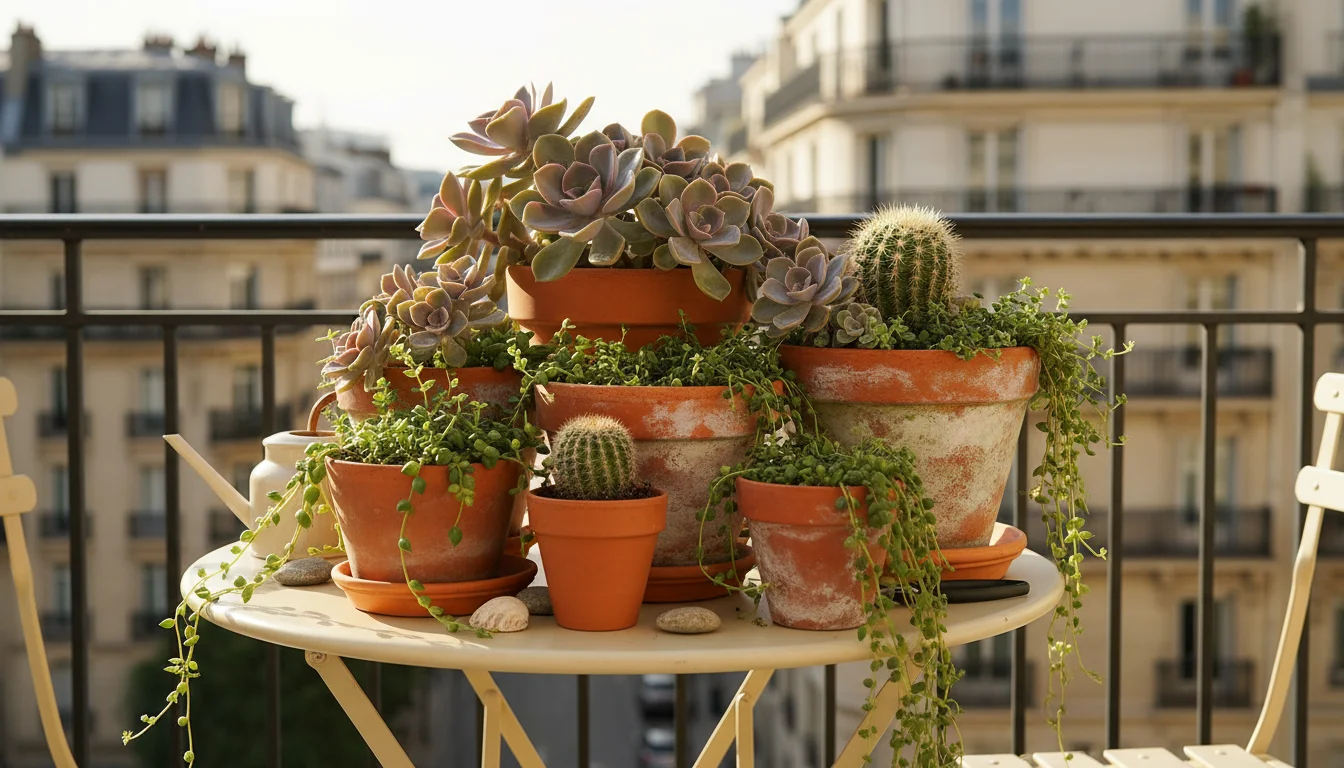
Choose the Right Plants for Your Climate and Conditions
Selecting plants appropriate for your specific microclimate, sun exposure, and soil type is the most critical step in reducing maintenance. Plants struggling in unsuitable conditions require constant intervention, such as extra watering, feeding, or pest treatment. Research plants that thrive in your area with minimal fuss. For example, if you live in a hot, dry climate, focus on succulents, cacti, and Mediterranean herbs. For reliable information, consult university extension services; the Royal Horticultural Society (RHS) website provides comprehensive plant advice.
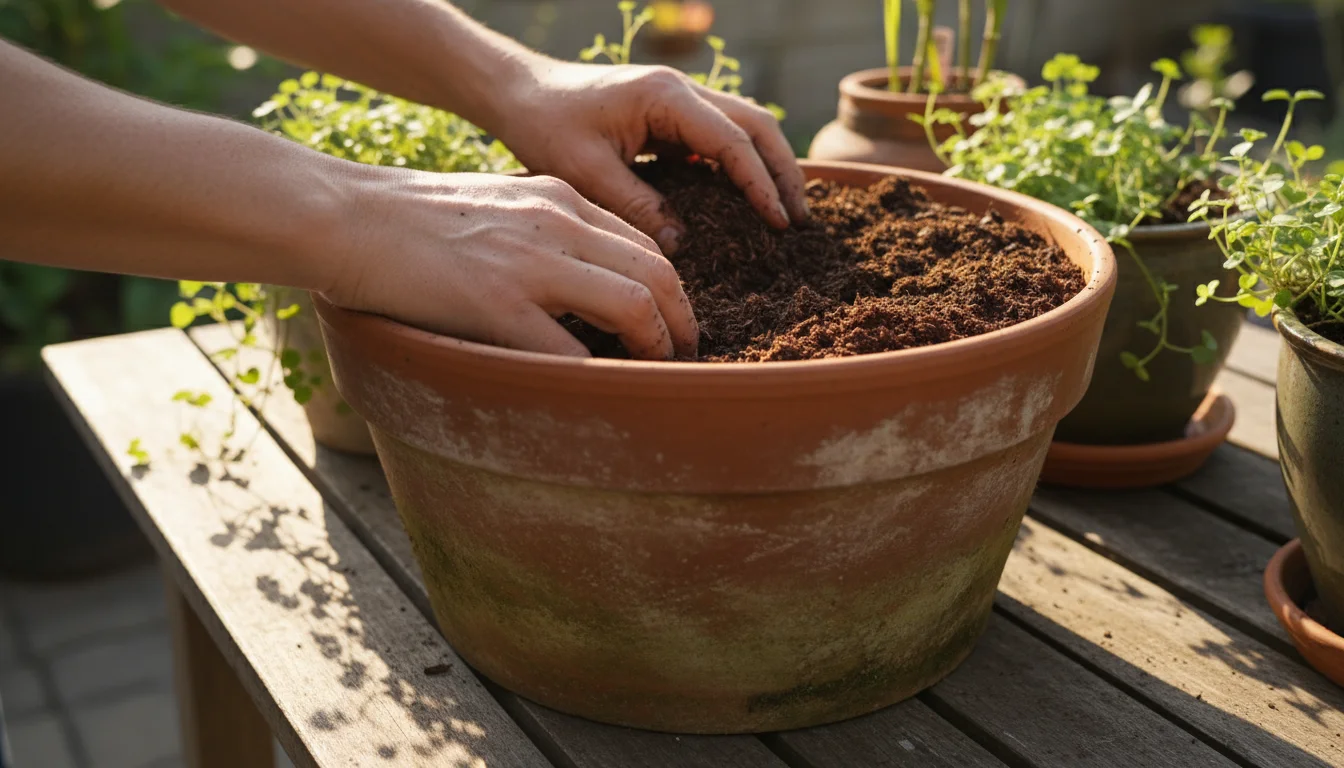
Improve Soil Health
Healthy, well-draining soil leads to stronger plants that resist pests and diseases, requiring less intervention. Amend heavy clay soils with organic matter like compost to improve drainage. Add compost to sandy soils to improve water retention and nutrient availability. Optimal soil structure reduces the need for frequent watering and fertilizing.
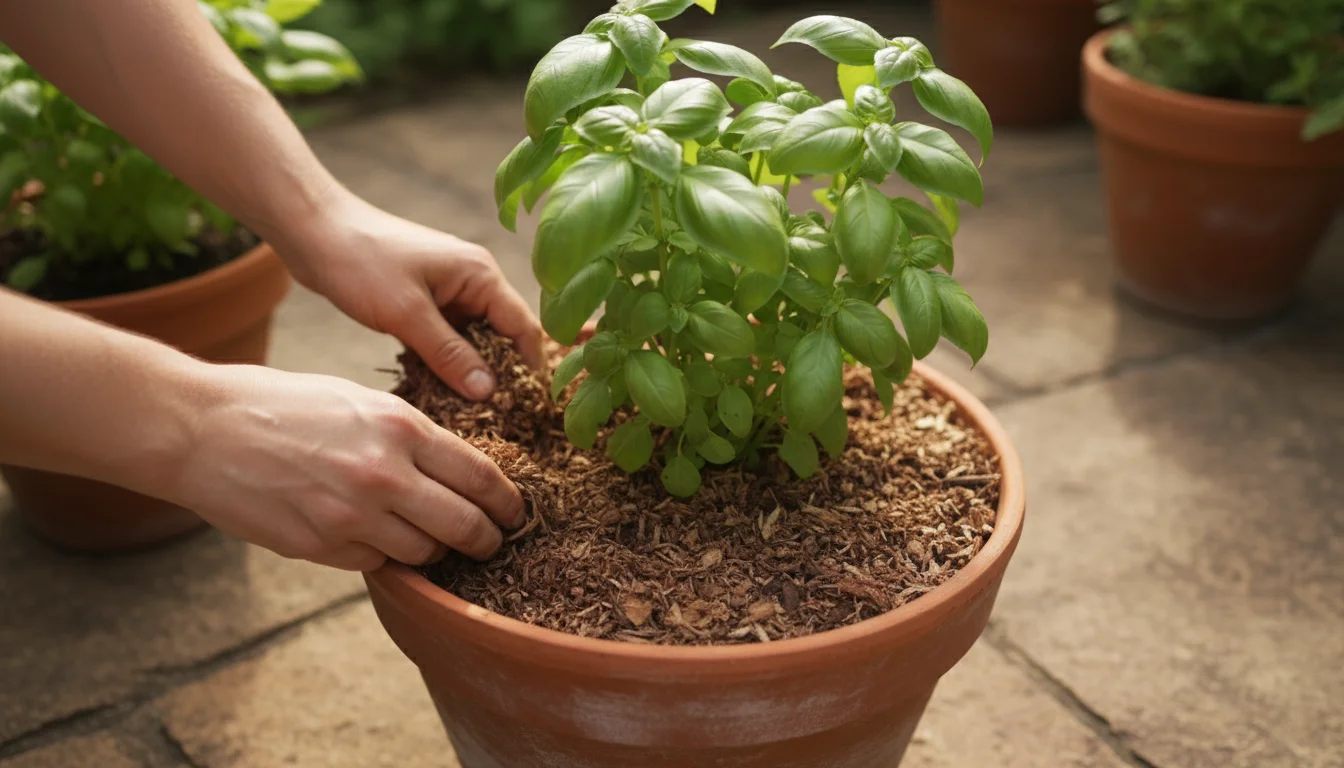
Mulch for Moisture and Weed Control
Apply a 2-3 inch layer of organic mulch, such as shredded bark, wood chips, or pine needles, around your plants. Mulch suppresses weeds by blocking sunlight, reducing competition for water and nutrients. It also helps retain soil moisture, meaning you water less frequently. Furthermore, mulch insulates plant roots from temperature extremes. Use locally available and affordable mulch materials. This simple step significantly reduces weeding and watering tasks, making your affordable garden makeover much easier to maintain.
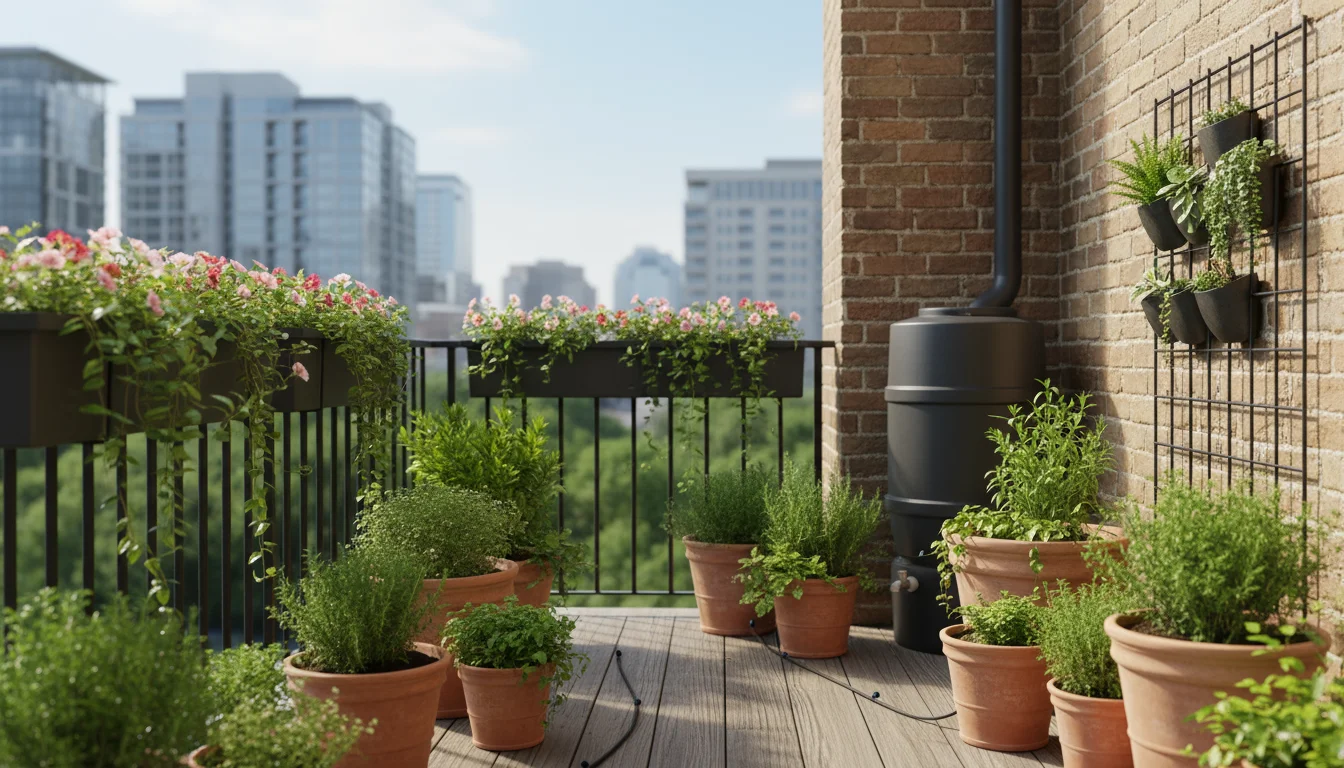
Install Efficient Irrigation Systems
For container gardens and small beds, consider a simple drip irrigation system or soaker hoses on a timer. These systems deliver water directly to the plant roots, minimizing evaporation and waste. While there’s an initial setup cost, they save water and labor in the long run. Even a self-watering planter, which holds a reservoir of water, can significantly reduce your daily watering chores. For very small spaces, a watering can filled with rainwater from a rain barrel (a budget-friendly addition) handles most needs.
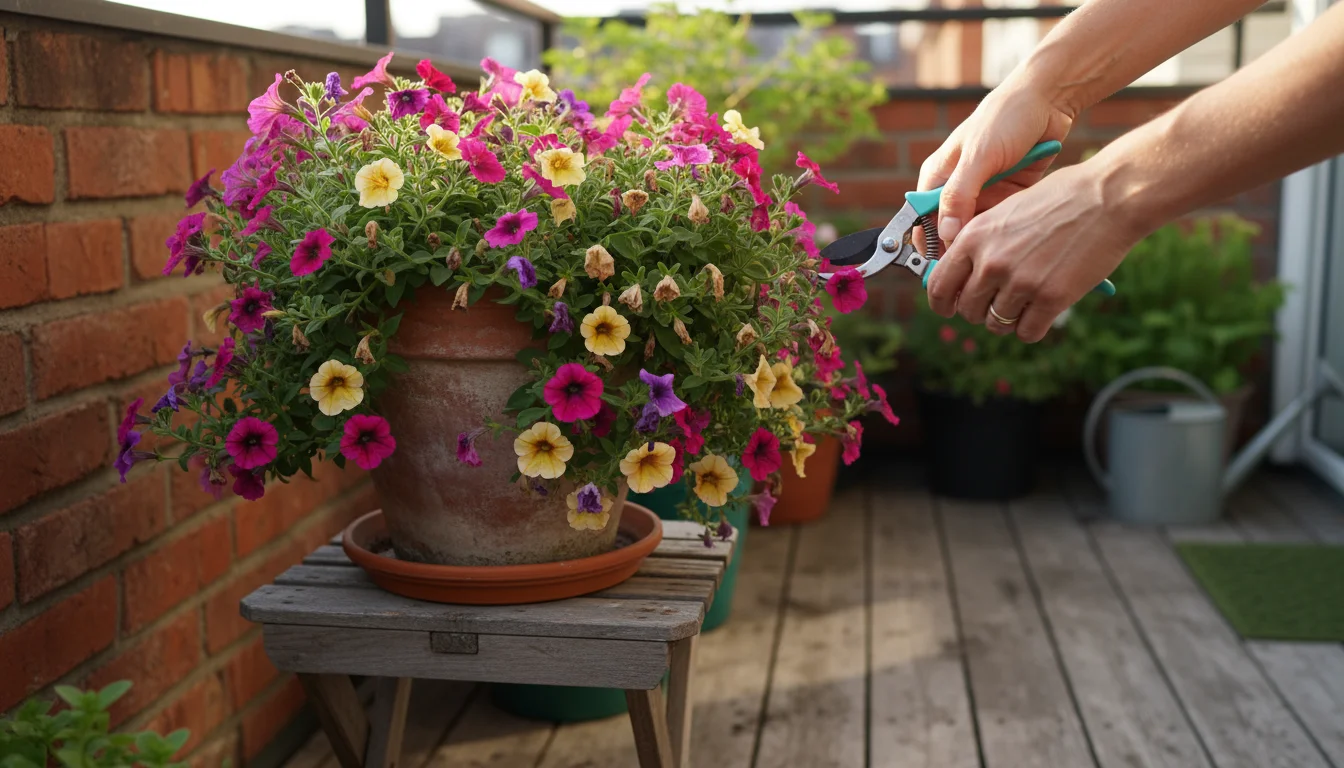
Prune for Health, Not Just Aesthetics
Regular, light pruning maintains plant health, encourages bushier growth, and prevents diseases. Remove dead, damaged, or diseased branches promptly. Deadheading spent flowers also encourages plants to produce more blooms. This preventative maintenance avoids more extensive, time-consuming issues later. Understanding your plants’ growth habits helps you prune effectively without overdoing it.
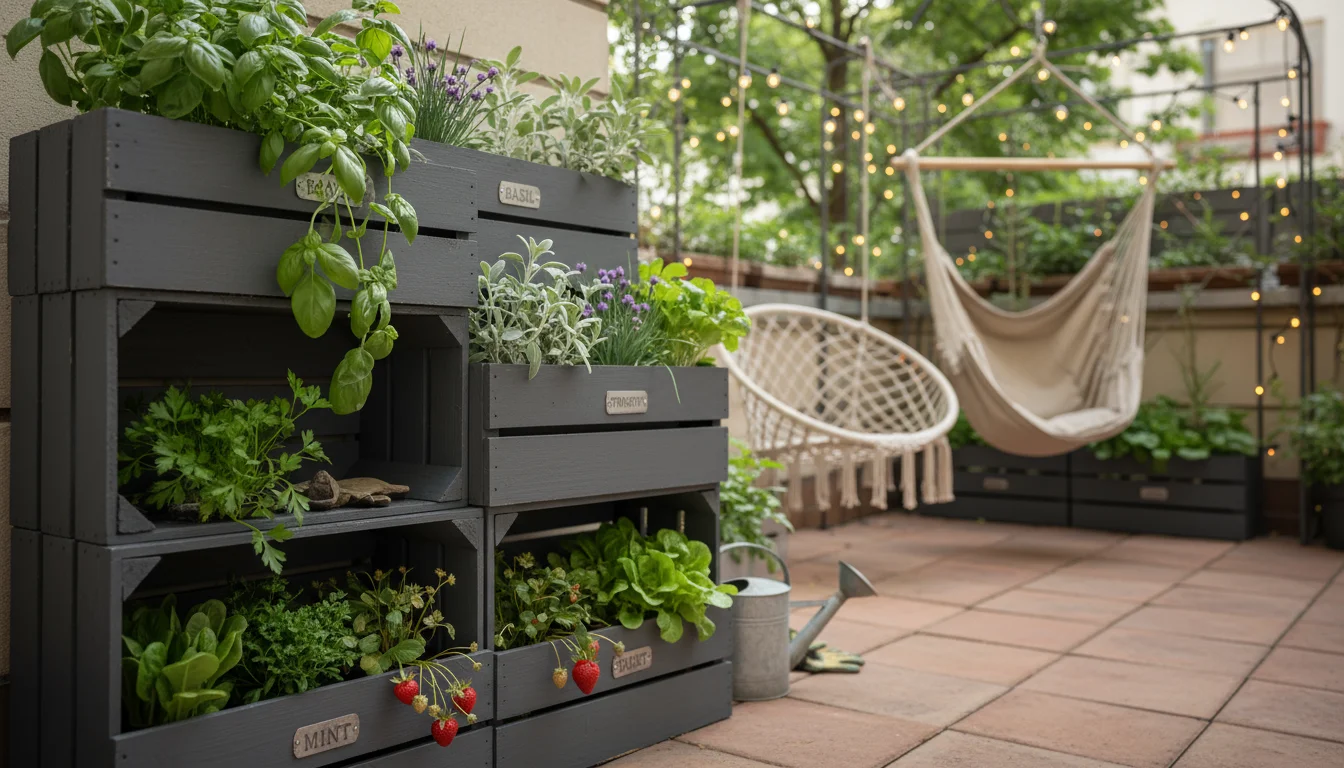
Frequently Asked Questions
How can I make my small garden look bigger on a budget?
To make a small garden look larger, use large, fewer containers rather than many small ones. Group plants to create lush zones. Incorporate vertical elements like trellises or shelves to draw the eye upward. Use a consistent color palette to create harmony and a sense of expanse. Strategic placement of a mirror can also create an illusion of depth, just ensure it is weatherproof and safely secured.
What are the cheapest materials for garden landscaping?
The cheapest materials often include salvaged wood (pallets, old fence pickets), river stones or pea gravel for pathways (buy in bulk for savings), reclaimed bricks for edging, and repurposed household items for containers or decor. Look for free compost or wood chips from local municipalities to enrich soil and mulch beds. Starting plants from seed or acquiring divisions from friends also reduces plant costs significantly.
How do I create a focal point without spending much money?
You create a focal point by highlighting an existing feature, such as an interesting wall texture or a striking corner of your space. Repurpose an old bird bath, a uniquely shaped stone, or a salvaged architectural piece. Plant a single, dramatic plant in an attractive, thrifted pot. The key is to draw the eye to one specific, interesting element, not necessarily an expensive one.
Can I really grow a beautiful garden if I am a beginner?
Absolutely. Start small with easy-to-grow plants like herbs, succulents, or resilient annuals such as marigolds or zinnias. Focus on good soil and consistent watering, which are fundamental to plant health. Observe your space, learn from your experiences, and do not be afraid to experiment. Many online resources and local gardening communities offer invaluable advice for beginners. You build confidence and knowledge with each successful plant you grow.
